Without exception, every brand or a shoe series has that product (or an event) which helped it achieve escape velocity; the massive push which speeds up the journey from esoteric adoption to mainstream acceptance.
For Skechers, it would be Meb’s endorsement and the improved GoRun’s. For Hoka, the Clifton seems like the suitable catalyst. And while everything seems to make sense in hindsight, we think the Speedform Gemini to be a pivotal product in the evolution of UnderArmour’s running division. And in recent times, the Energy Boost did a great deal to lift adidas’s fortunes.
When you look past at all the Nike Vomeros from version 1 to 9, it is easy to spot the tipping point. Some might disagree, but we strongly believe that this particular shoe series peaked with the 2008 Vomero 3. It was sinfully luxurious; it was obvious that Nike designers/product managers/developers had a carte blanche on this model from the powers that be. They chose nothing but the best materials and technologies (at the time) to go with this shoe.
Solereview was just starting out back then, and we wrote the Vomero 3 review in our third month of existence. We were amazed that a shoe could be so comfortable and feel efficient at the same time, and our resulting review sounded extremely fanboy-ish – because that’s exactly what we were of the Vomero.
Apart from the Vomero, the Nike Skylon was one of our other favorite shoes at the time. Scratch that – in those days, there was unapologetic, wide eyed gushing in each and every one of our reviews. Ah, how times have changed.
The Vomero 4 and 5 were also meaningful updates, but from version 6, things really started going downhill. The 7, 8, and 9 were half-hearted attempts as far as design updates were concerned.
None of these shoes were particularly bad, and would have worked for many seeking a cushioned shoe to run in – at a basic, functional level, there was nothing wrong with them. But these models lacked a clear point of view which separates an average shoe from a great one. The once stellar Vomero lay dormant in a hibernation of mediocrity.
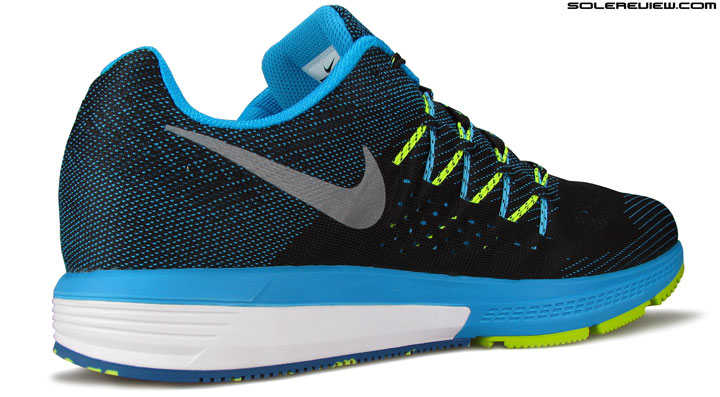
There was the Vomero 3, and then the V-10. All other versions? Mere footnotes, evolutionally speaking.
Finally, the dark clouds have parted and the sun shines once again . If the Vomero 3 was the tipping point for the well known franchise, the new Vomero 10 is its spiritual equivalent in 2015. The V10 discards the attitudinal apathy of the past few years, and is clearly a result of a product creation process in which every detail has been clearly thought out. This is a much polished product with few rough edges to speak of, and like the 3rd edition, melds the best of what’s currently available in Nike’s arsenal.
We also have to keep in mind that the Vomero 10 exists in a different time and place than 2008, and hence caters to a changed consumer mindset. For example, it does not have the plushy softness of the V3, nor does it use a soft cocoon of thick spacer mesh to wrap your foot. And few talked about forefoot striking compatibility in 2008, but in 2015 that is commonplace discussion, and hence becomes a performance expectation. Also, today a firm ride is as desirable a design trait as midsole softness is. And excess shoe weight is now a cardinal sin.
The Vomero 10 is a product born out of this contemporary context, and successfully achieves a great balance of attributes. Cushioning without the sink? Check. Lightweight? Check, lesser bulk than the Vomero 9. Spacious upper fit with no quirky spots? Check. Competitive pricing? Check, undercuts other brands by around a tenner, though the 2015 price is $10 above the Vomero 9.
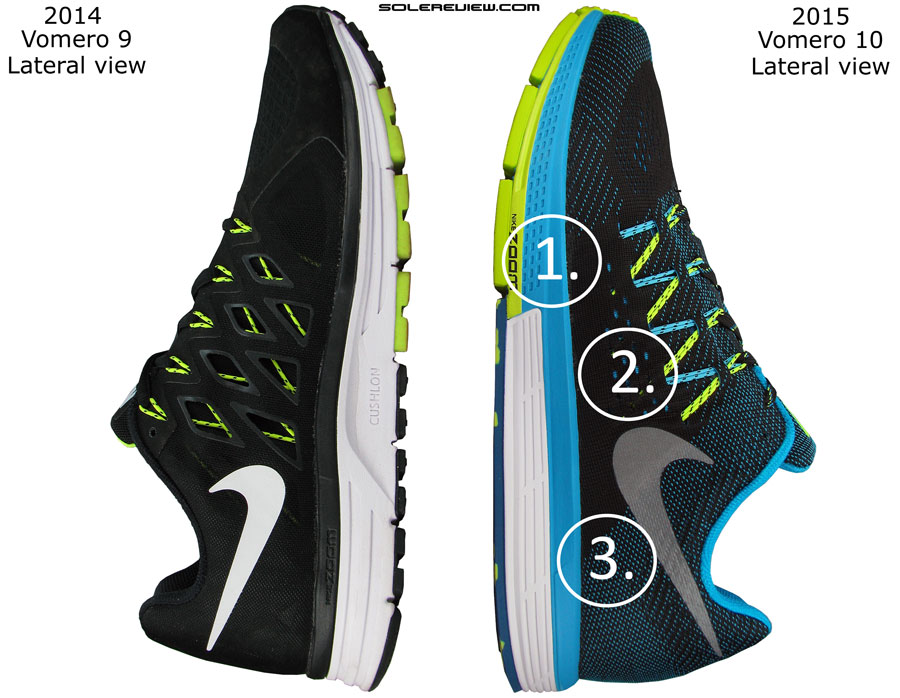
1) Lunarlon foam+Zoom forefoot
2) Revised Flywire positioning with double looping 3) Reflective logo, Lunarlon+EVA heel and midfoot
There are a raft of updates on the new model, and given their magnitude, the wise thing to do here would be to first deconstruct the upper and midsole/outsole changes, and then follow it up with a summary on the quality of upper fit and ride behavior.
A cursory glance at the new upper, and it is clear that Nike has completely discarded the older Vomero template. Instead, it is redesigned from scratch as was the Pegasus 31 and Structure 18, and aligns with the new, holistic design theme. Which is basically a shift to the use of a single piece upper made by combining engineered mesh and internal sleeving, with Flywire cords snaking up the sides.
The Vomero 10 might look identical in most part to the Structure 18, but there are significant differences. First of all, while both models use a fabric composite which Nike calls the Flymesh, the execution differs across. At a fundamental level, both the shoes have two mesh layers. On top is the 2-in-1 Flymesh which combines two meshes together; they are separate mesh layers in some areas while bonded together in most places.
In the forefoot, the Vomero 10’s Flymesh splits itself into two distinct layers, as opposed to the Structure 18’s unified construction.
Try separating the forefoot mesh with your finger tips, and you will be able to feel three layers – two of the Flymesh, and one which forms the internal sleeving.
In many of their recent models, Nike uses an invisible toe stiffener underneath a bumper, a component which creates space around the tip. The Pegasus 31 also used this, but the toe bumper was rather shallow, pressing down on the big toe.
The Structure 18 and Vomero 10 also has this, but this is where the Vomero 10 sets itself apart. If you were to gently fold the Flymesh over the toe-puff below, you can see a faint outline of what’s underneath.
Do the same thing with the Structure 18 and Pegasus 31, and you are sure to notice that the Vomero 10 uses a higher toe-stiffener which not only is larger, but comes with a more assertive molding line around the tip. This creates a higher canopy of sorts around the toes, as you in see the picture above.
The cord based Flywire lacing is standard fitment on most current generation Nike models, and the Vomero also gets its fair share. Four columns on either side to be exact, with the last two eyelets near the heel kept free.
In the interest of weight saving and conformity to the minimal design overtone, the eyelet holes are punched straight into the Flymesh upper, and backed up inside with a reinforcing eye stay panel so that you don’t tear the upper over time. There is also a laminated film on top to prevent the mesh from fraying.
When compared to the Vomero 9, the Flywire lacing design and placement comes significantly modified.
The Vomero 10’s Flywire now comes with double looping – two cords of Flywire forming a loop – instead of single cord design of the V-9. This update makes a fit difference, and we’ll delve into the details of that shortly.
Internal sleeving has been infused into many recent Nike shoes, and is always a welcome addition which improves the general quality of fit. The Vomero 10 goes from a non-sleeved upper (Vomero 9) to a full bootie construction for this year.
The inner sleeving forms the second (or third, if it’s the forefoot) layer of mesh, and is sandwiched with some foam padding. The sleeve is flat locked stitched to the tongue and heel lining, so no irritating seams to worry about.
Tongue design is minimal, and uses the Flymesh on top (the bonded version, not dual layered) and another fabric as its lining – similar to what’s on the collar, but not the same – the one used on the collar is softer.
Coming to think of it, the tongue is identical to what the Structure 18 employs on its upper.
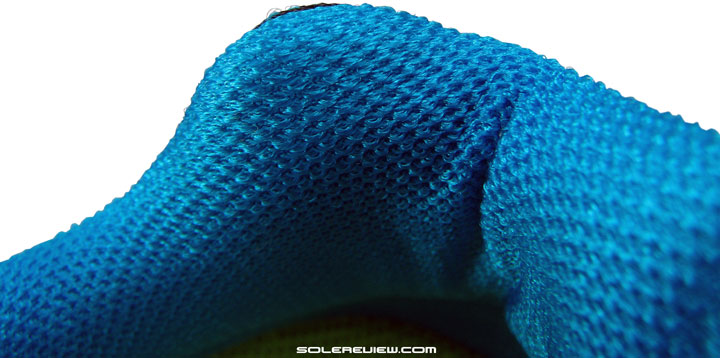
Nike calls upon its trusty ol’ collar lining fabric, loyal to the Vomero since the dinosaurs ruled the earth.
One of the things we remember from the Vomero 3 was how plush its mesh package felt, of which the collar lining was a part. Nike has wisely chosen to keep using the same mesh over all these years, with many of their more expensive models featuring it.
The Nike Flyknit Lunar 3 had it, and so does the 2015 Vomero 10. That soft touch mesh is backed inside with a reasonable level of foam volume.
We’ve placed the Vomero 9 and 10 side by side from a heel vantage point, and visually the Vomero 9 appears to have a shorter heel back height. You’d be partially right in thinking so, because externally, the upper height is lower than the Vomero 10 by around 4 mm – an effect of raised midsole cupping. But that does not count; what actually does is the actual back height when measured from inside the shoe.
Place a ruler upright inside the heel, and the finding is the opposite of what you might expect. The Vomero 9 has a deeper heel area than the V-10, its collar edges rising around 3 mm higher than the 2015 Vomero.
Not only that, there are a couple of additional design differences. First, the upper heel portion of the Vomero 10 is much softer than the 9, and two, the V-10 counter molding has a wider splay/width than the 9.
The reason behind this is a higher internal heel stiffener of the Vomero 9, combined with the use of firmer upper materials.
The Vomero 10 has a slightly lower heel counter inside, and the mesh around the Achilles is much softer, making the entire area more malleable.
This also means that the reflective inserts on back heel have been displaced, appearing instead on the side Swooshes. Both the lateral and medial logos are reflective, in line with Nike is doing with most of their shoes.
We’re reviewing the Blue Lagoon Vomero color, and this edition comes with a few aesthetic differences.
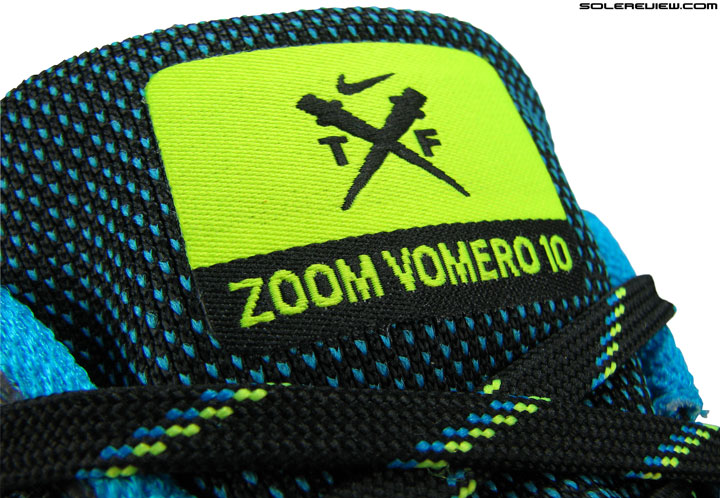
We picked up the nicest color combination available. This is the ‘T&F’ edition. Abbreviation for Track and Field, we presume?
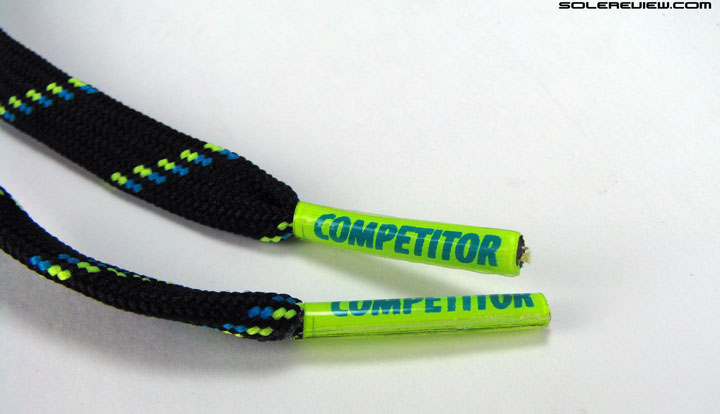
Even the laces are flat and dashed with a few extra colors. So much better than the boring, round, solid hued ones.
This appears to be a special ‘Track and field/Competitor’ color combination, and it comes with flat multi colored laces instead of round ones; the tongue label says ’T&F’ and the lace aglets scream ‘competitor’. The reflective swooshes here don’t have a border, and is one solid graphic. And we actually prefer flat laces over round ones, it just makes the shoe look a tad more sophisticated.
Go down to the midsole and outsole, and the updates are huge. The Vomero 10 drops the long continuing tradition of marrying Cushlon EVA and Zoom Air bags; it instead opts for a mix of Lunarlon foam, EVA and Zoom Air. So this marks two important events of design change.
One, that dual density makes a comeback on the Vomero after four long years, and two, according to Nike, this is the first instance of Lunarlon and Zoom Air pairing up.
This signals the end of Lunarlon’s otherwise solo act, and as the Vomero 10 attests, it turned out to be a good thing. In a way, this is a validation of sorts, and perhaps the future shape of things to come?
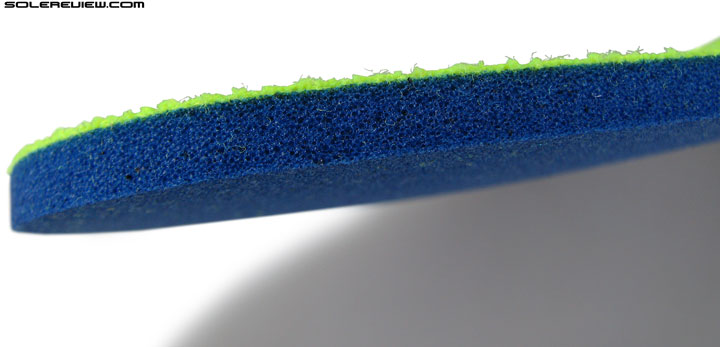
Single density insole. Why do we call this out? Because the Vomero 9 had a dual density footbed, that’s why.
The new midsole is topped off with a molded insole, which arrives with similar aesthetics, yet with three areas of change. The zoomed up picture above shows the cross section of the Vomero 10 sockliner.
If you don’t think something’s amiss, then you need to compare it with the Vomero 9 insole. This year, the insole is single density Ortholite, whereas the previous version was made of two-density foam.
The Vomero 10 insole uses a more resilient foam, in comparison to the sandwich like structure of ‘soft on top, firm below’ design of the Vomero 9 component. It is fitting that Nike chose to redo the text call-outs on the insole top. While the earlier footbed said ‘Fitsole 3’ sub-titled with ‘fit+cushioning+support’, the Vomero 10 just says ‘Running’ with a description of ‘Neutral Ride/Responsive’.
Third in the list of insole changes is the revised under-arch flare. The older insole had a much more prominent flare all around the heel and midfoot, including the arch area. On the Vomero 10, the edges don’t rise up as much and is relatively tapered off.
Zoom air bags are popped in the rear and front, as the case always been. There’s also a now familiar cellulose board over the heel Zoom (a trend started from V-7), while the forefoot Zoom lies directly under the foam lasting.
Zoom air, if you’re new to Nike, is a slim, air filled Urethane chamber with a drop stitch design. Numerous fibre strands connect the top and bottom urethane sheet, helping the structure retain its shape.
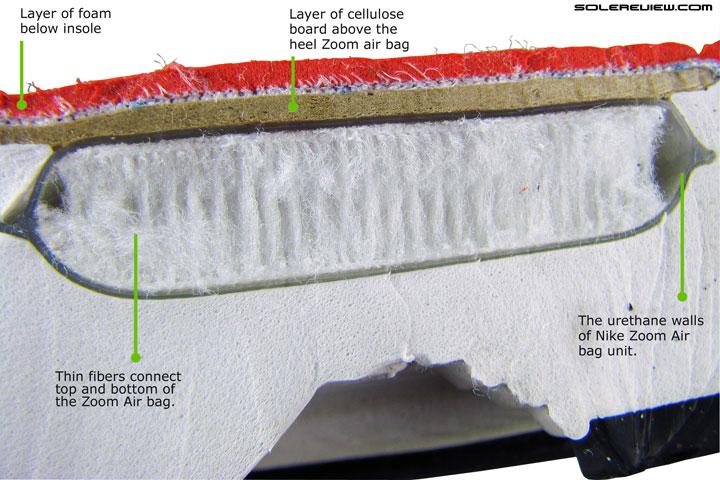
This cross section is from a 2012 Vomero 7, and shows what a Zoom Air unit looks like. The fibres connecting the top and base walls form what is known as a ‘drop stitch’ construction.
Other examples of drop stitched construction would be camping mattresses or inflatable SUP boards.
We’ve dissected the Zoom Air bags and board lasting in our other reviews, and here’s a picture. The Vomero 10 uses similar Air bags and placement.
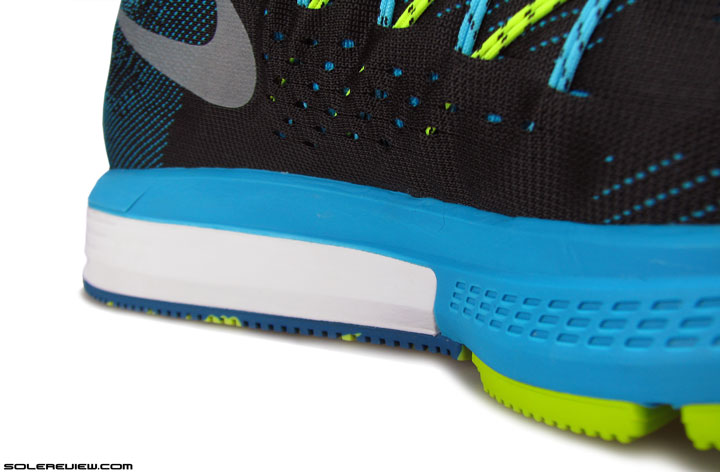
Nike tries something new on the Vomero 10. A Lunarlon foam layer combined with a firmer EVA wedge and Zoom Air inserts.
The pièce de résistance of the Vomero 10 is the Lunarlon foam-bed, and in this case a full heel-to-toe length piece interlocked with a EVA wedge.
The white EVA provides the base under the heel and midfoot, and is firmer than the Lunarlon assembly atop it.
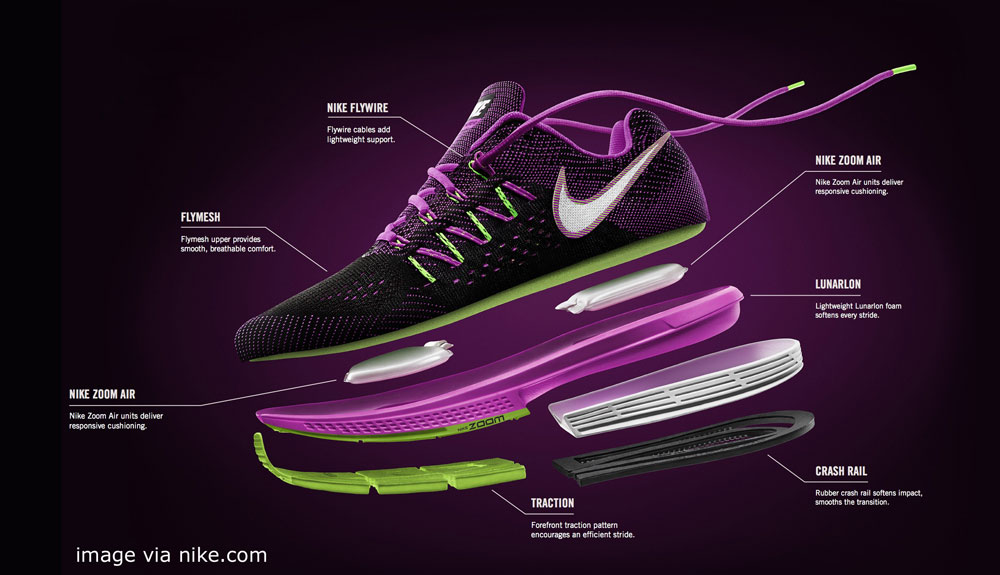
An exploded view of the Vomero 10. Shows how the dual density foams interlock, and the relative size of the Zoom Air bags.
While the heel and midfoot midsole cushioning is delivered by the combination of Lunarlon, EVA, and Zoom, forefoot has only the Zoom and softer Lunarlon as midsole material.
We must underscore that the area over the Zoom Air bag has only the thin lasting and not the midsole foam. Here’s (image above) taking a quick look at the exploded view of components – this is from Nike’s website, and shows how the components stack up. The Air bags are popped in their cavities above the midsole.
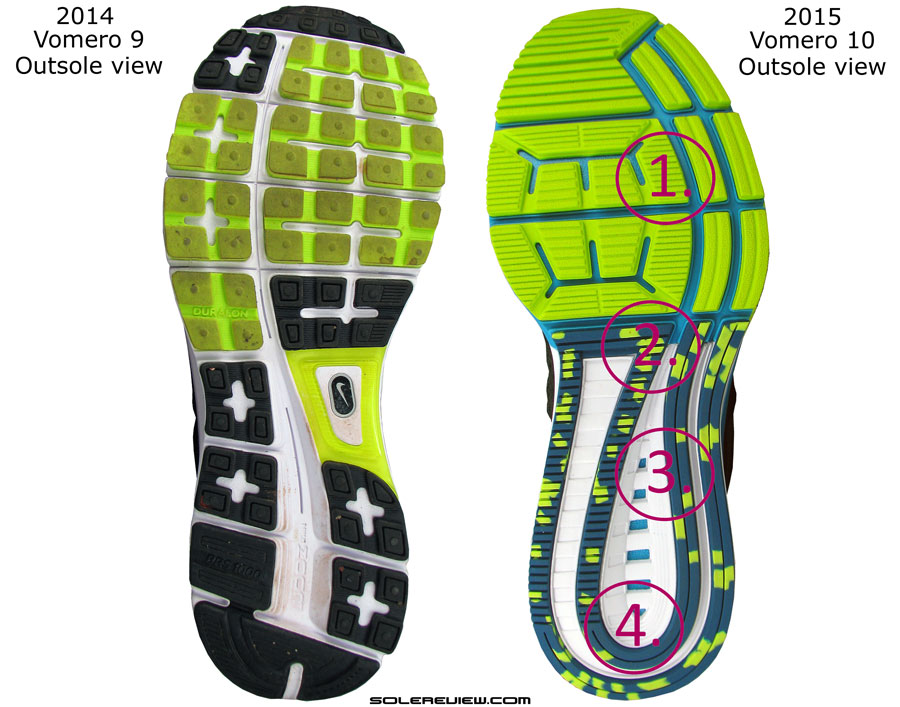
1) Larger blown rubber slabs instead of waffle lugs 2) No plastic shank 3) Deeper transition groove+new parallel crash rails 4) No segmented heel crash pad
The Vomero 10 refreshes its outsole design from an articulated one to something more cohesive. Until this point, the Vomero outsole featured a combination of softer blown rubber (Nike Duralon) under the forefoot and harder carbon rubber in the heel, with scores of small waffle lugs in the front with split rubber pieces in the rear.
All that is left behind, as the Vomero 10 uses larger slabs of blown rubber upfront, and a twin set of parallel rubber strips running under the midfoot and heel.
This means that the segmented crash pad of years past has disappeared, replaced by this unbroken rubber underside which Nike calls the ‘crash rail’. If you read our Pegasus 31 review, you’d know that this design element debuted on the refreshed Pegasus last year.
Nike maintains the transition groove from the Vomero, the area right under the heel center. Only this time, it is a little deeper, and the blue color you see is the Lunarlon interlocking with the EVA base. Also have to add that the medial side plastic shank from the Vomero 9 is also history, and now the outsole goes truly full contact, filling out the undersides of the midfoot.
If you are a solereview regular, you know that we call out a shoe’s shoddy fit and finish if that happens to be the case. Even in our Vomero 9 review, we pointed out the excess glue stains between the upper and the midsole. We’ve always maintained that this can be controlled, provided people work hard supervising factory lines.
And why are we bringing this up? Because our pair of Vomero 10 validates what we’ve always been saying. That a shoe can have a superior quality of fit and finish with that extra push, and a commercial product from a major brand should not only feel and fit great, but also put together in the same spirit.
The finishing on the new Vomero 10 is superb and a thing of joy for a shoe reviewer. The joint lines between the midsole and outsole are flawless in execution; even with a difficult upper (to clean up glue stains), there is no visible residue between the Lunarlon edge and the fabric.
Even the symmetry of assembly across the right and left pair – the standard which dictates that corresponding upper components on both shoes should match up perfectly – is also an area where the Vomero 10 scores a, well, perfect 10.
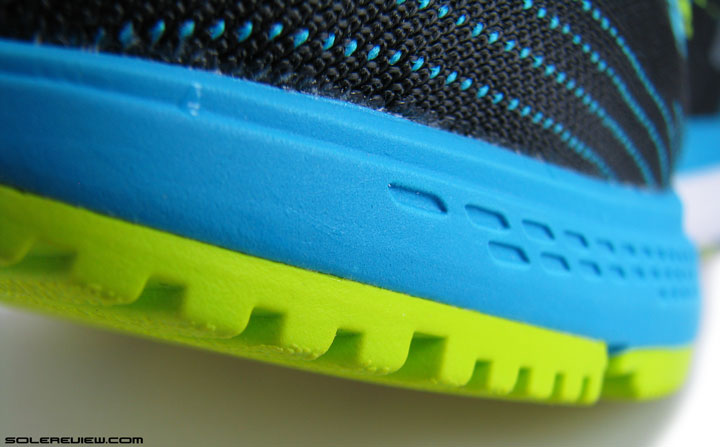
Meticulously assembled; see how clean the midsole and outsole joint lines are. We should give credit where it is due.
If the adidas Tempo 7 Boost represented the lowest end of the assembly quality spectrum, the Vomero is the one you find when you move the slider all the way to high. We have to give credit where it is due, and the Vomero 10 is truly deserving of this rare compliment.
So in essence, that was the long and short of the Vomero 10’s new design. What about the fit and ride?
Historically, Nike fit quality has always been a bit quirky. We mean, sometimes too loose or tight in one place, or loose overall. Few of the pre-2015 shoes have managed to stay in the goldilocks zone of upper fit, a utopian world where interior space and level of snugness are happy roommates. Even the much liked Pegasus 31 had a shallow toe bumper.
Nike is genuinely attempting to get rid of their fit idiosyncrasy, as evident in the recent slew of releases. We wouldn’t have said that if our impression was based on just one shoe. The fit updates on the 2015 Flyknit Lunar, Free 5.0, both the 3.0 and 4.0 Flyknits hint that a concerted effort is being made to bring about upper fit transformation.
And of course, that transformational mindset has obviously been applied on the Vomero 10 too. The upper fit feels much better than the Vomero 9, in more ways than one. For starters, the forefoot fits so much better.
The raised profile of the internal bumper and the absence of synthetic overlay produces a higher toe box, with ample space around the big and small toes. The forefoot sides fit smoother, and gets rid of the slight Vomero 9 pressure point over the small toe. That is also attributed to the lack of synthetic overlays, a factor which helps create splay room for the foot.
We’re not saying the forefoot is loose. Rather, it is a good balance, where comfortable snugness comes from the inner sleeve, and relative freedom of movement comes from the material properties of the Flymesh upper. The lacing has also inched forward by around 5 mm compared to the Vomero 9, which has the mesh sitting flush over the foot. Good thing, that.
Many would have noticed that Nike has started offering widths in standard colors of the Vomero 10 and Pegasus 32. If you remember, a wide fit was previously limited to special Nike ID make-ups which came at an upcharge, and that too was available only if you lived in the continental United States or UK. Hence the move towards offering the option of widths is definitely an improvement, and by the looks of it, other Nike models will soon (hopefully) jump on this train.
Fit in the midfoot is excellent. Mainly because of A) there is an inner sleeve, and B) because the Flywire is now double looped. The inner sleeve instantly brings about a consistency of fit hitherto missing in Vomero versions 7~9. The interiors are smooth too, as any joints are merely flat-lock seamed and devoid of any materials which might feel invasive.
Secondly, the double loop design of the Flywire helps spread pressure over a broader area, relative to the straining sensation from the single cord Flywire design (Vomero 9). So finally, the cord based Flywire lacing system is growing on us, as it eliminates most of its sore points. This is new on the Vomero 10; even its closest design relative, the Structure 18, had only single threads of Flywire.
If anything, the tongue could do with a wee bit more foam padding. Not that we want the tongue to be super plush; that would look and feel out of place on the upper design. Right now, the need of the hour is increased insulation from top down pressure, particularly when used with round laces.
On the plus side, the longer tongue allows the last row of lacing to be placed atop with plenty of margin to spare. Chances are, you will heel lock the Vomero with the last row of eyelets, because the Vomero has an Achilles heel, and quite literally so.
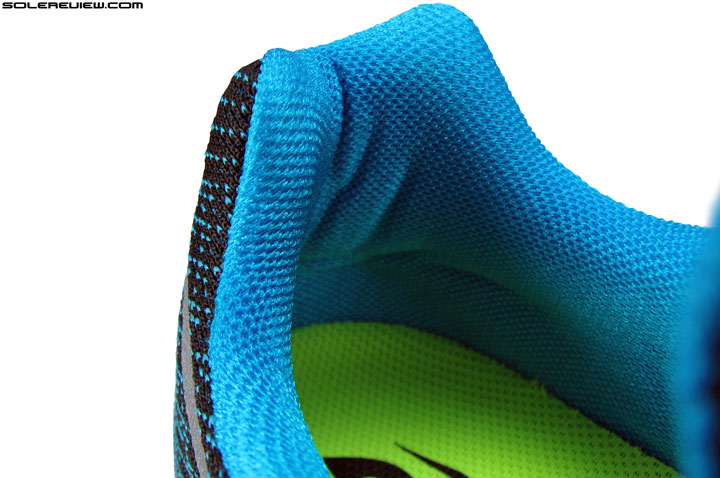
The inner back height is lower than V-9, and the molding splay wider. Result? Less assertion when it comes to heel grip.
The collar area feels very plush around the foot, roger that. But with a shallower back height and wider splaying, the heel grip around the foot isn’t as confidence inspiring. In fact, coming from the aggressive heel vice of the Vomero 9, the Vomero 10 is a sensory letdown. However, we did not experience actual slippage, only the illusion of heel looseness.
Design features of a shoe can have a sensory or functional outcome, and in some cases both. Like how certain people look for higher under-arch support, though speaking of functional benefits it might not amount to much. Same goes for elements like harder medial posts or plastic midfoot shanks, both of which might or might not be of any use.
The fact is, in running shoes placebo effects seem to matter as much as unseen functional ones, and in this aspect the Vomero 10’s collar could be seen in a negative light. Not actual slippage, but it feels loose. Of course, a quick medicine for this is to use the last eyelet row with heel lock lacing, but we were talking like-to-like with the Vomero 9.
On the other hand, one could argue the other side of the situation. That the Vomero 10 has a much softer Achilles dip and is much more easygoing, so how does that become a negative? One person’s meat is another’s poison, and this is why running shoes rarely get an unanimous perspective, if ever at all.
The heel discussion aside, the Vomero 10 upper is a tremendous improvement overall. The Flymesh has noticeable squish, the insides are roomy and yet manages a superlative level of forefoot and midfoot grip in its standard D width. This minimal approach to upper design has yielded fruit with regards to weight savings; the Vomero 10 weights 312 gms /11.2 Oz, which is 19 gms/0.7 oz lighter than the 2014 vedition. The Vomero 10 upper is also such which can be worn fresh out of the box, zero break-in period required.
As far as the midsole ride is concerned, we’ll be quick in pointing out two key differences between the Vomero 9 and 10. Even if you don’t care about the Vomero 9’s ride, this will help set the context for how the Vomero 10 feels during motion.
Firstly, the Vomero 10 feels softer on the upper part of the midsole and firmer below. This is the reverse of how the V-9 felt, with a firmer top and a softer base. Secondly, the Vomero 10 forefoot cushioning is softer than the heel. This is a rare, rare trait.
Because just by virtue of tapering stack height – the heel being thicker than forefoot in most shoes – the front should logically be firmer than the back. But there’s a good reason why this happens on the Vomero 10, an area which we will be very happy to explain.
Fundamentally, four things work together to influence running shoe cushioning. The insole or the footbed quality is one. The midsole or outsole material density is another. The presence or lack of an embedded cushioning (and its size) is the third factor.
The last, and the often overlooked, is the outsole design. A outsole layout split into smaller pieces tend to deliver greater softness than an outsole with larger pieces.
There is no better way than to compare Vomero 10’s forefoot and heel outsole design to illustrate how these factors combine forces. The Vomero 10 heel uses a firmer board over the Zoom bag, has a firmer EVA layer beneath the Lunarlon, and the heel outsole is neither soft like the forefoot Duralon nor is it split up into larger pieces.
So when you combine the softness of the all-Lunarlon midsole with articulated blown rubber, and the unfettered Zoom Air bag topped with a thick insole, you end up with a forefoot which is softer and more responsive than the heel.
The flexibility of the V-10 is lower than Vomero 9 due to changed forefoot design, and that is something which can be an advantage (we think it is) or a perceived drawback, depending on what you seek.
This has the Vomero 10 catering to the needs of a forefoot striker as much as it panders rearfoot landers, and that is a rare feat to accomplish in cushioning terms. Forefoot Zoom is also more accessible, as nothing except for the insole and foam lasting separates it from the foot. Encapsulated Zoom Air bags used in the Vomero are huge, and hence effective. This is no Asics Gel.
If the upper fit was a pleasing balance of lockdown and comfort, the Vomero 10 ride has the right mix of cushioning softness and responsive behavior. The Vomero 10 is soft, but without the compromise of a sink-in effect which can bog you down. This is a shoe to do long runs minus the cushioning inertia and the threat to cadence. This is no speedster, but far from marshmallow kingdom. Nike marketing graphics show a Vomero bursting through a down pillow, but that’s not an accurate imagery of what the Vomero 10 is. It is rather, the equivalent of a finely tuned spring mattress, if you were to use a bedding metaphor.
An important thing to keep in mind is that the Vomero 10 might not feel as cushioned when just walking around. It is only during runs that the Zoom Air bags get compressed, the under heel groove splay out, and the more resilient insole foam starts working the way it should. You can make far better (initial) sense of the shoe if you get a chance to briefly run on the treadmill in your local sporting goods store.
Ok, for some reason, let’s say you don’t want to buy the Vomero, and want something which rides similar. What would be the closest alternative? The Nimbus 17? No, too soft – now that one is a pillow. The Energy Boost? No, because the heel is very cushioned while the forefoot is not. The adidas Glide Boost? No, similar to the EB-2 in cushioning distribution.
The New Balance 1080 V5? Now we’re getting somewhere. The 1080 is similar to the Vomero 10 in the way that both the heel and forefoot are responsive. But that’s pretty much where the common trait(s) ends.
The heel is more cushioned than the forefoot, and the upper, while it fits very well, does not feel as comfortable as the Vomero 10. The most telling difference is the quality of transition, an area where the 1080 really lags behind the Vomero 10.
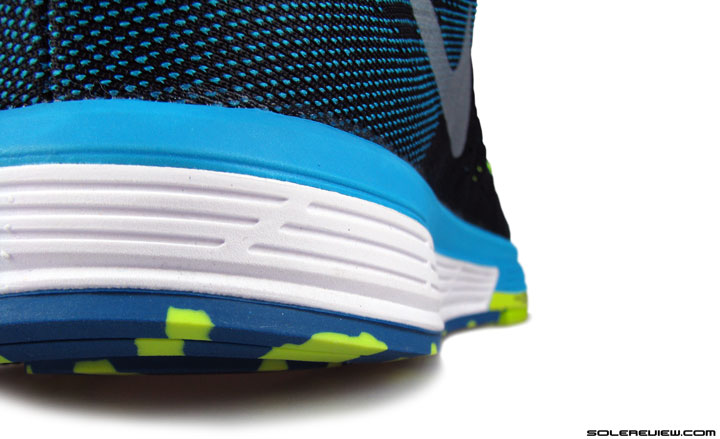
Lateral heel is angled slightly upwards for smoother landings. Also note that the lateral sidewalls lack features (groove, etc) which can produce bias.
If you look at the Vomero 10 outsole, there are quite a few things which benefit transition (to be clear, we’re talking heel to toe). The twin sets of ‘crash rails’ strips create an unbroken base of rubber for a progressive weight transfer, and the beveled heel helps ease heel strikes. The full contact outsole and transition groove does the rest.
What of the Pegasus 31? How does it compare? The heel cushioning is a close match owing to similar construction, except that the Vomero 10 is softer. Forefoot cushioning is firmer on the Peg, and the upper fit shallower.
That was the cushioning comparison with the Pegasus 31, but we haven’t covered the stability part of the story. The Pegasus 31 has a deep side groove on lateral midsole which gives it a bias. The Vomero 10 does not have that design feature, and hence is more supportive/neutral than both the Pegasus and the Vomero 9. The latter also had lateral compression grooves, a la Pegasus 30.
Today’s collective revamp of Nike’s core running models is so much better than the situation of just a few years past. A forgettable era when a disjointed mish-mash of shoe models somehow clumped together as an assortment, where each shoe tried to win as an individual product, and not as cohesive units communicating a uniform aesthetic and performance message.
Nike, it must feel so good to be back in the game. And here’s a tip, for whatever you think it is worth: stop calling the Air Max 2015 as a performance running shoe with ‘plenty of soft, flexible cushioning’; that plug is right up there with adidas claiming its Springblade will ‘propel runners forward with the most efficient energy return system’ or whatever glib phrases their copywriter came up with.
The new Vomero 10 runs rings around the Air Max, and then some.
(Disclaimer: For this review, Solereview bought the shoe at full US retail price.)
Looking to upgrade your older Nike Air Zoom Vomero 9 to the latest version, but not sure how the 2015 model compares? We can help here. The following infographic is a ready-reckoner for what changes you might expect in the new model vs. old. To make this more fun, we’ve put in a system of percentage match, which calculates a weighted average for a set of attributes.
A higher or lower match percentage is neither good or bad. The % number just tells you how similar or distanced the new shoe is from the previous version. Total match % is a result of weighted averages.

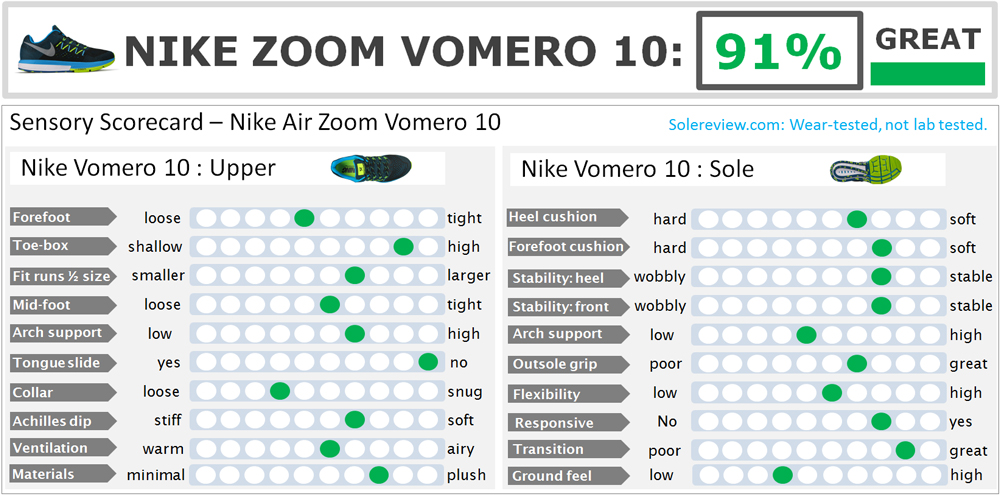
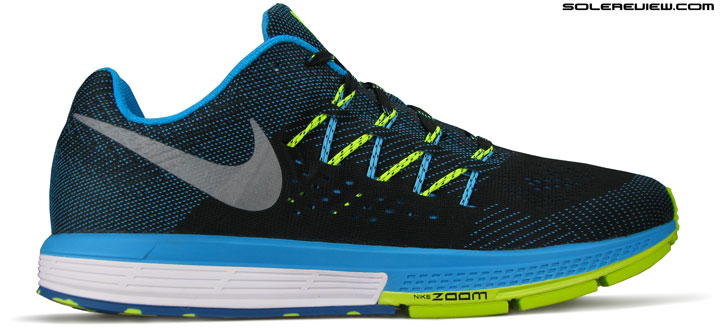
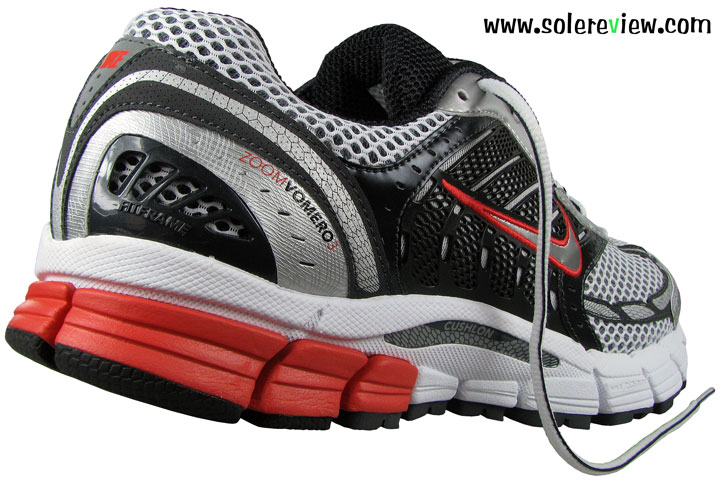
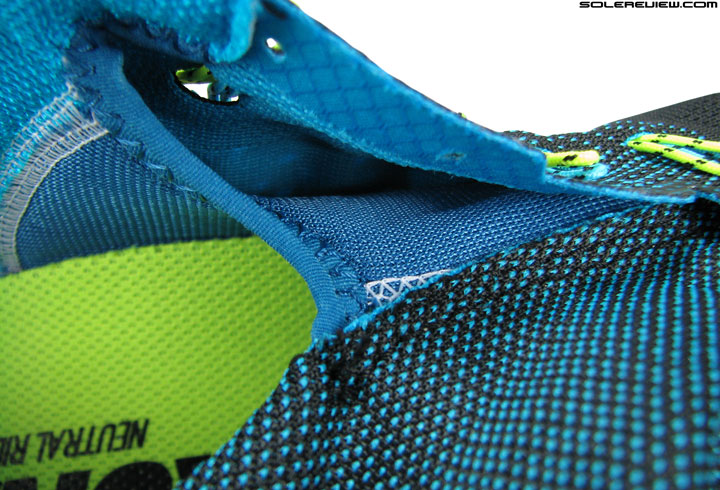
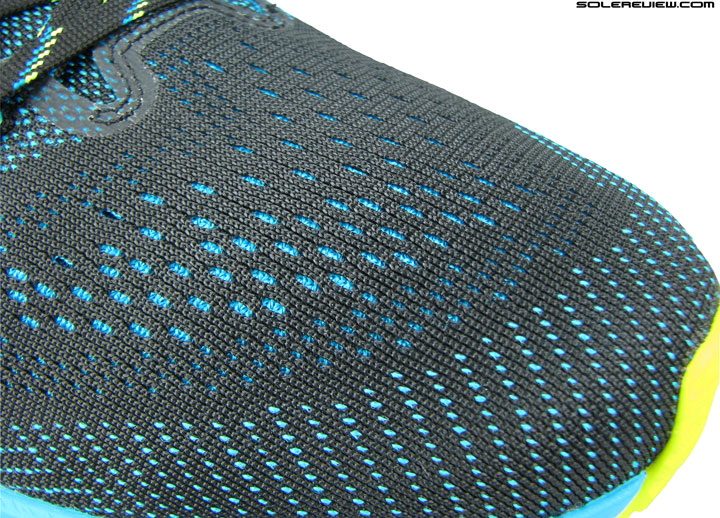
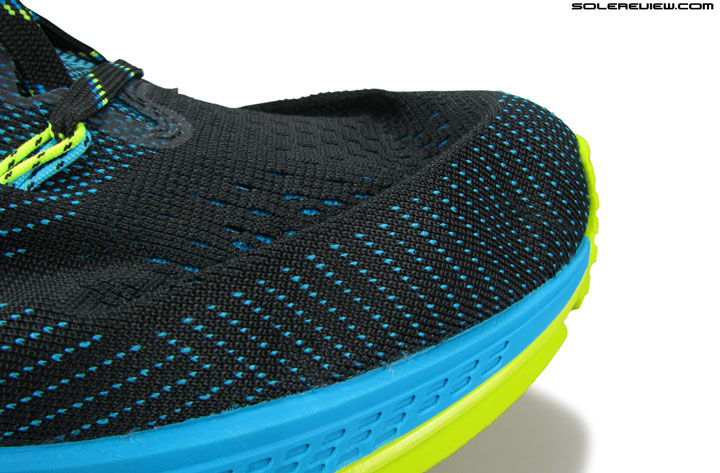
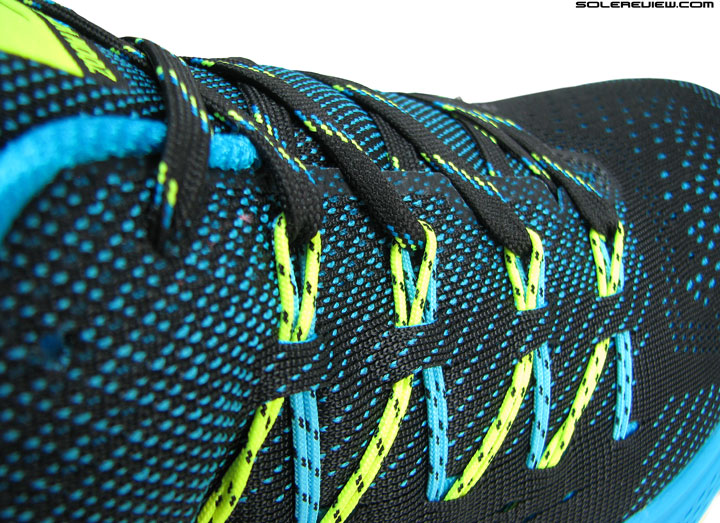
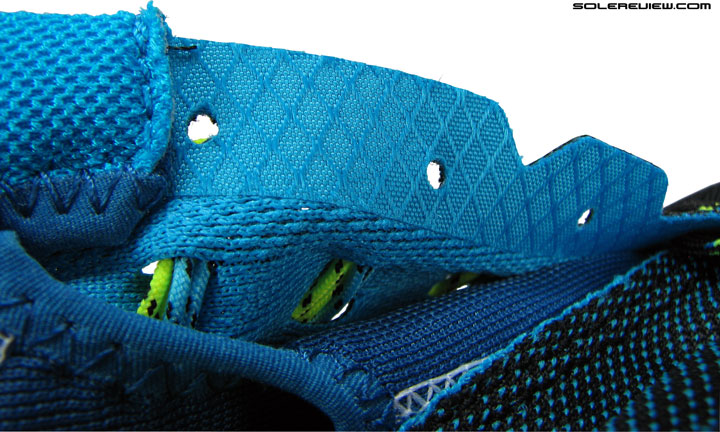
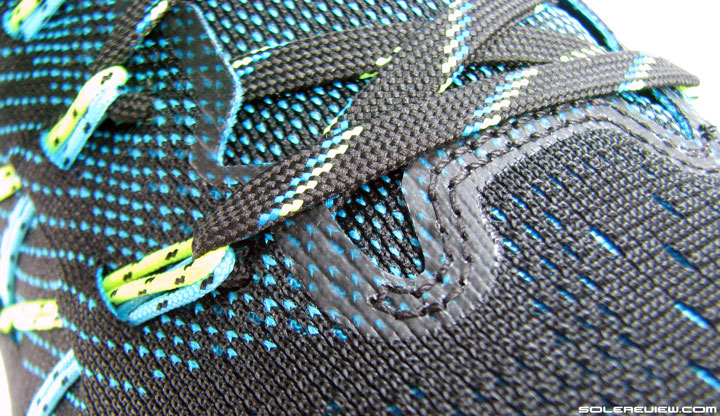
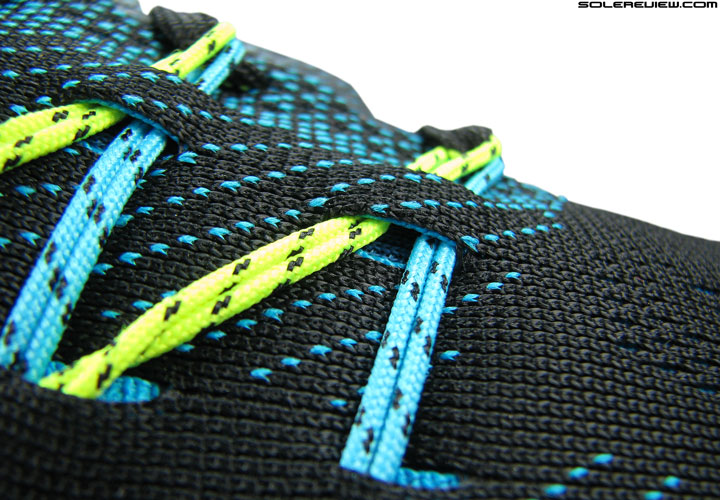
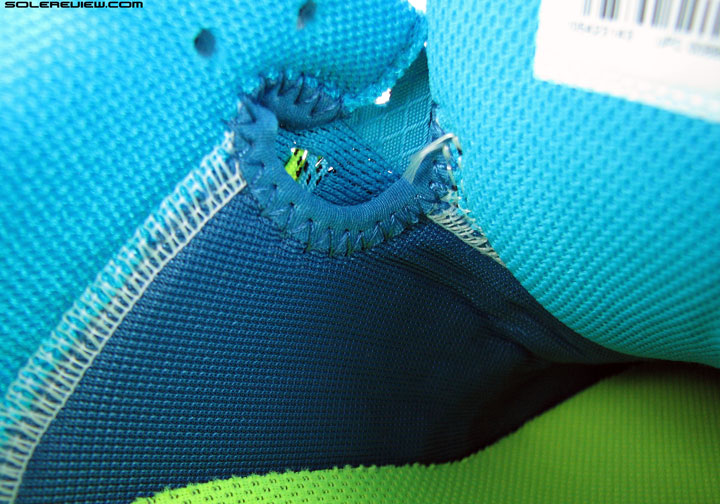
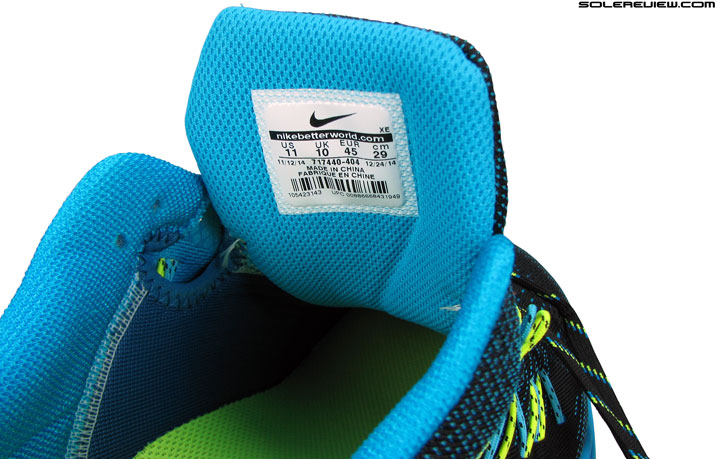
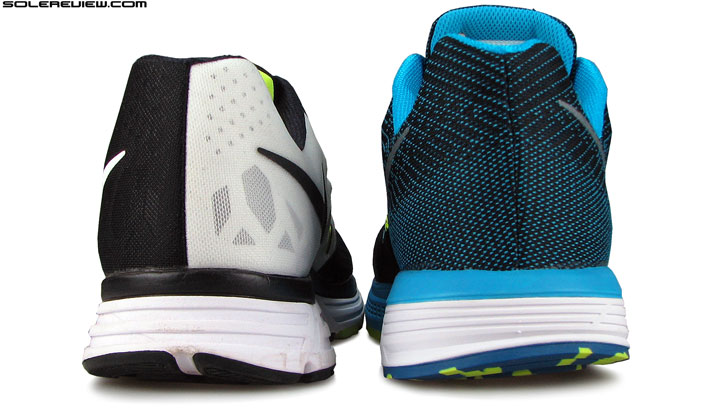
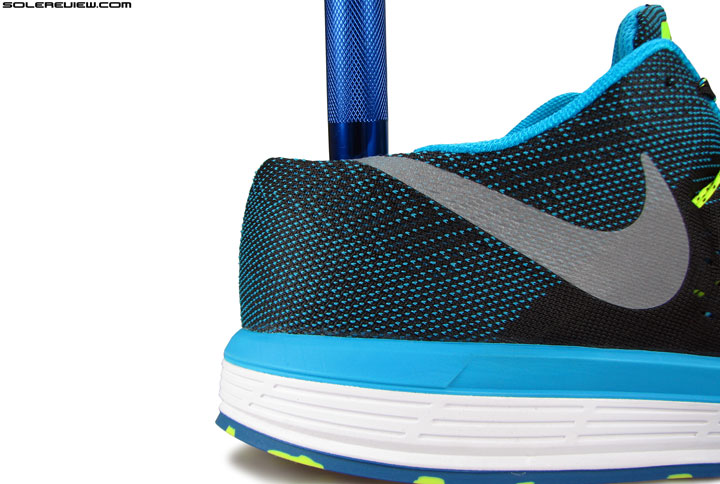
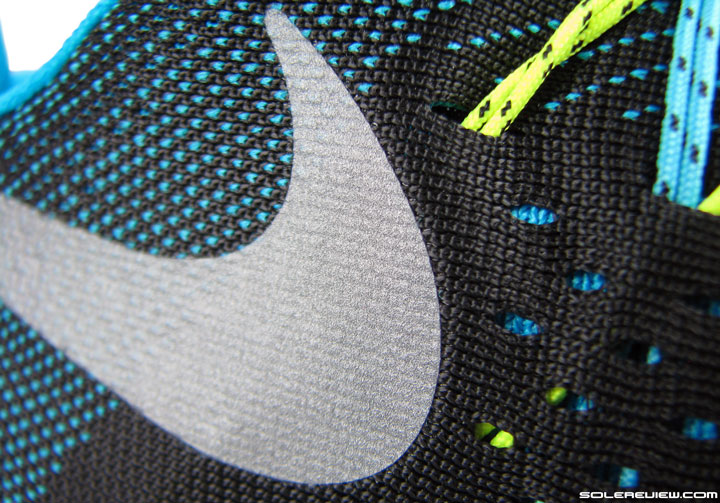
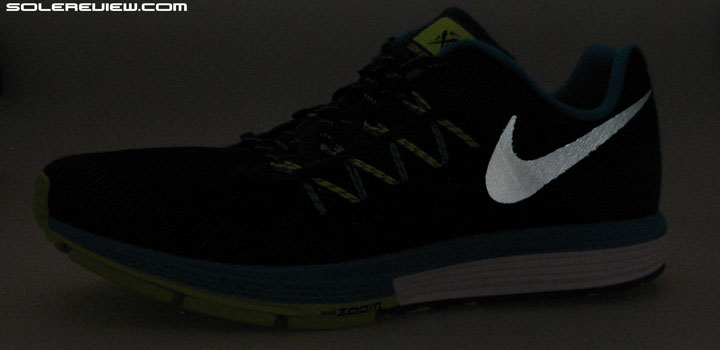
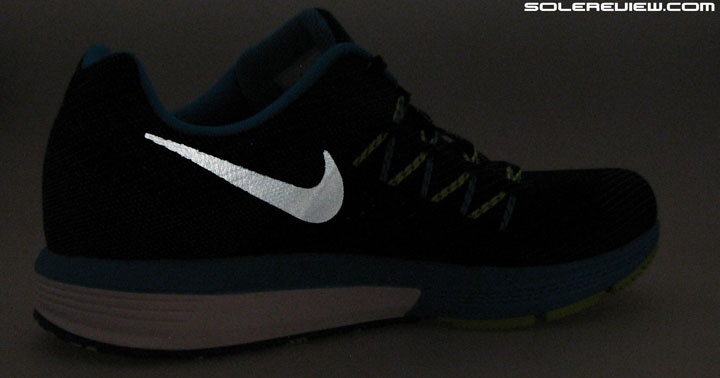
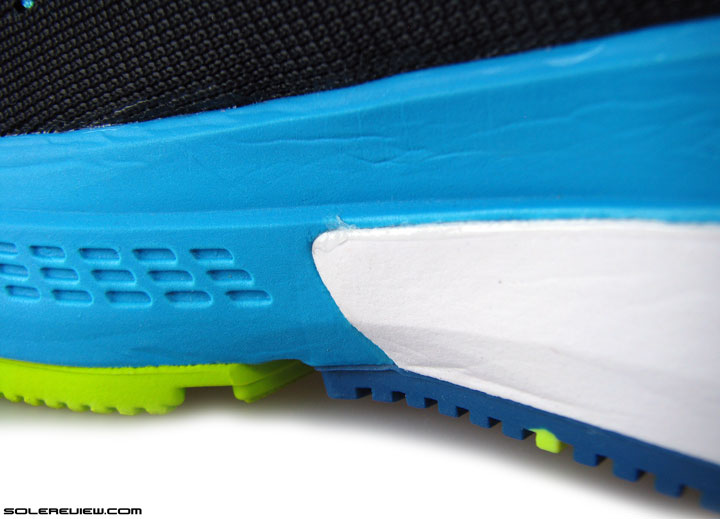
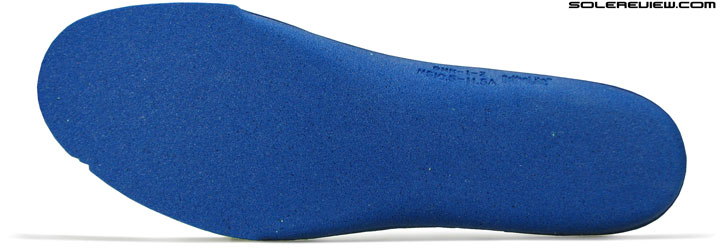
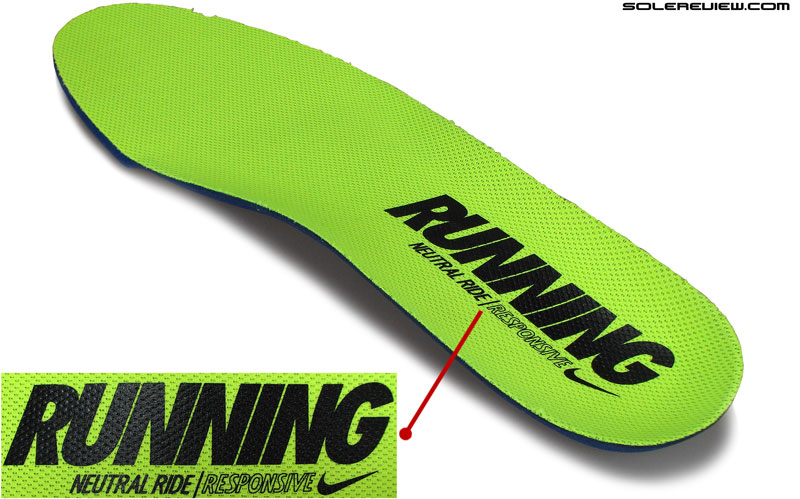
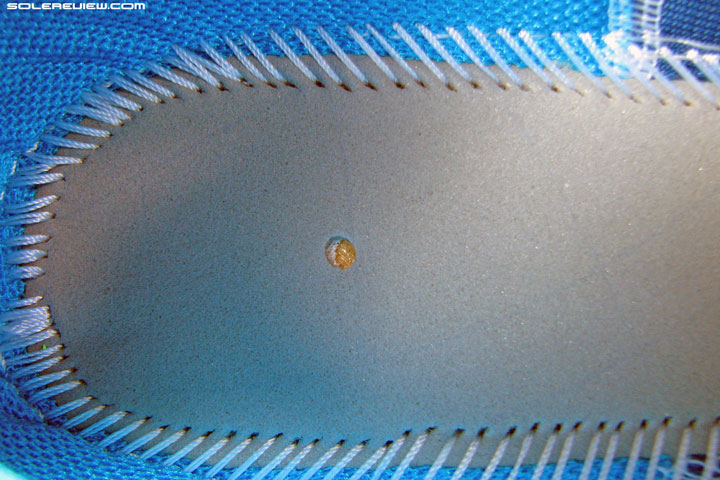
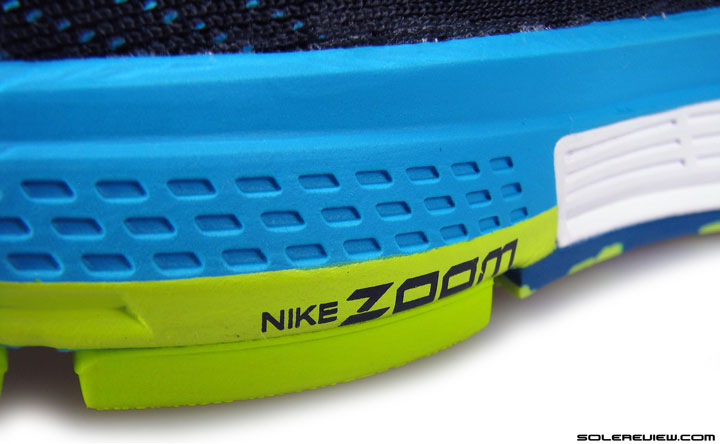
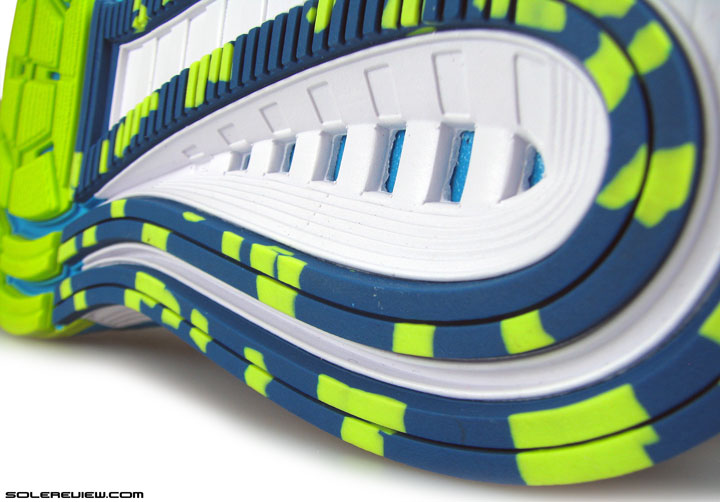
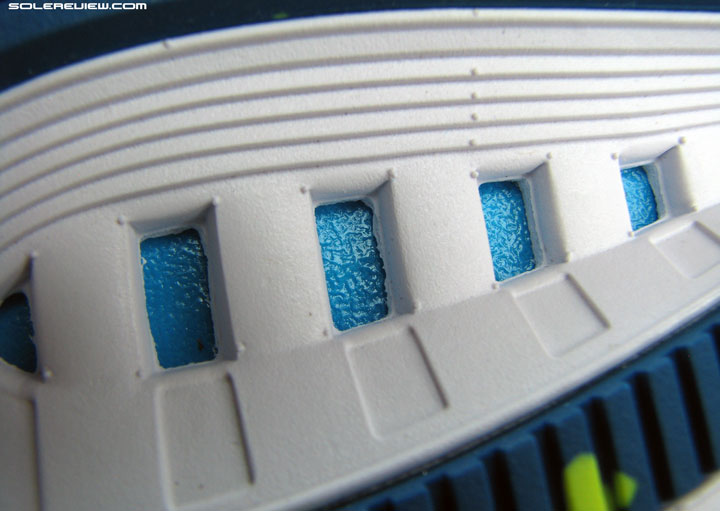
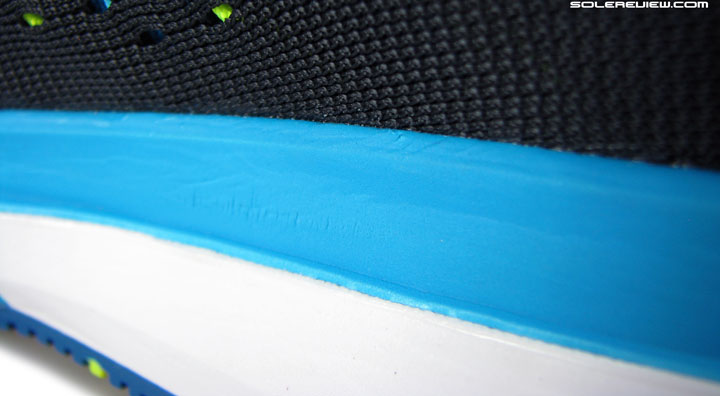
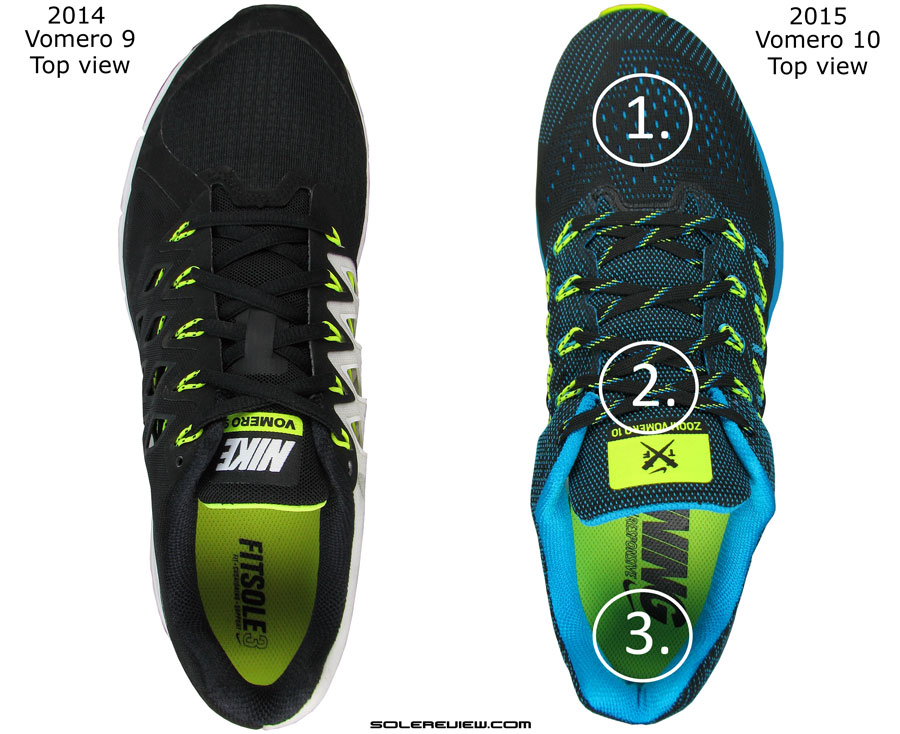
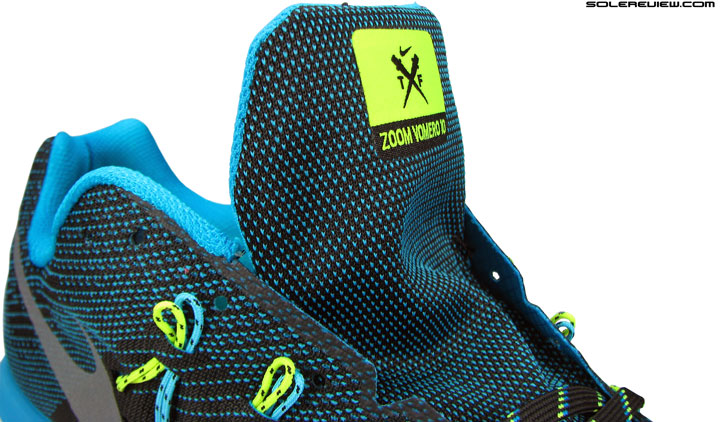
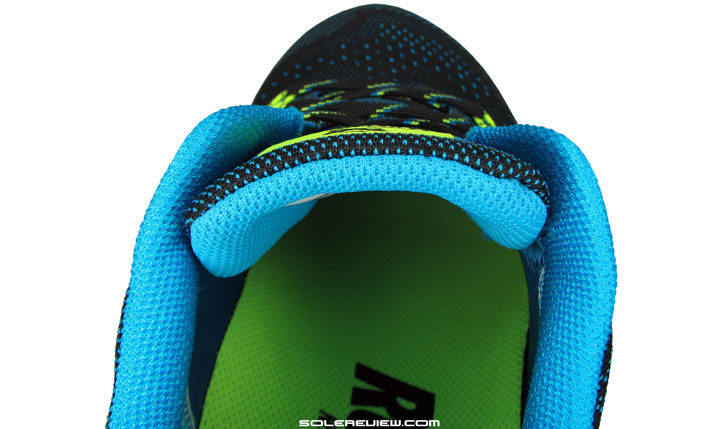
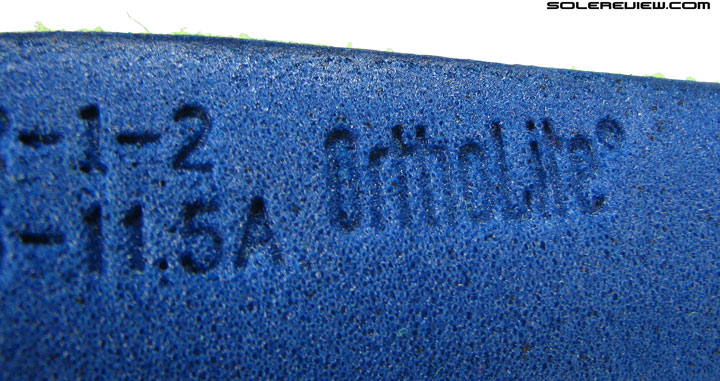
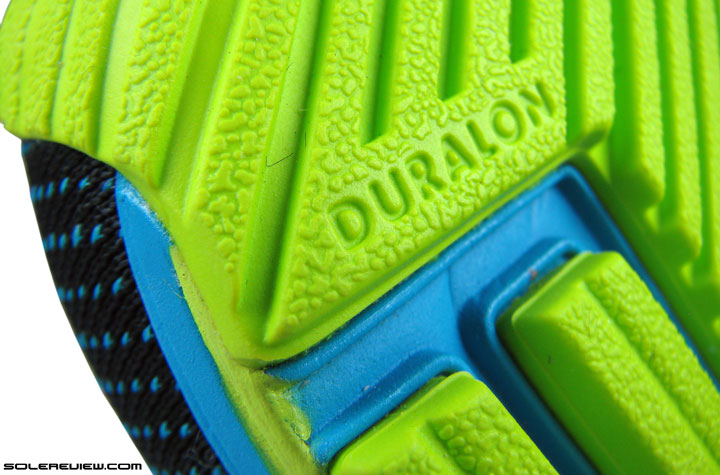
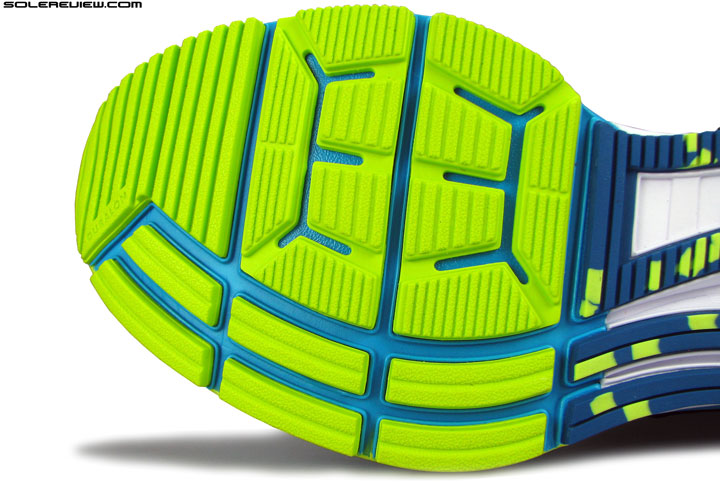
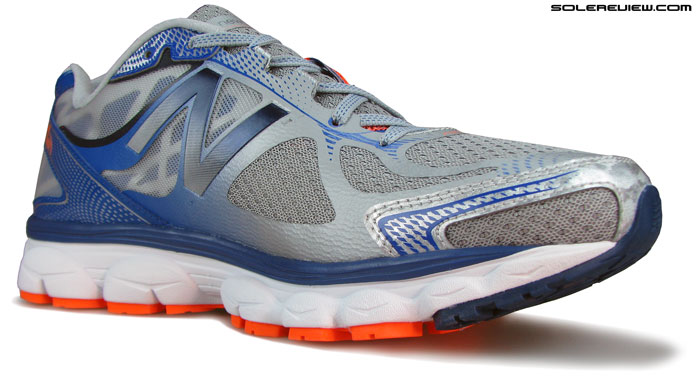
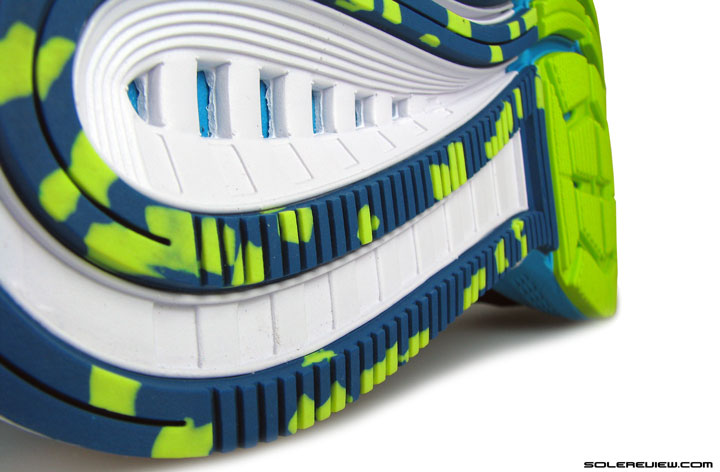
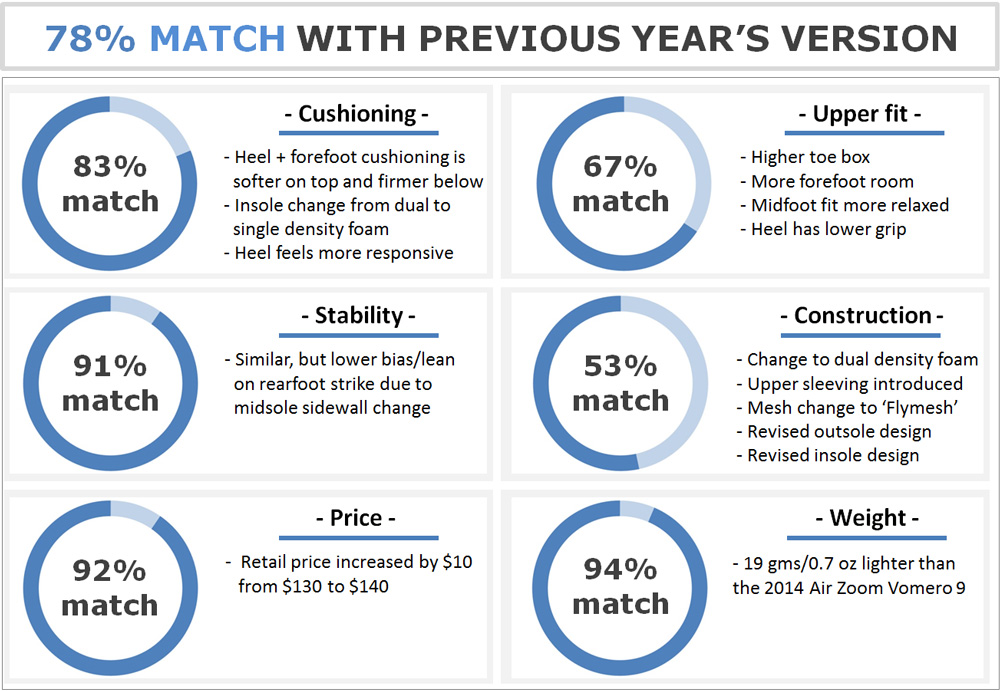
291 comments
I purchased both Vomero 10 and Pegasus 32. I was a fan of the early Vomero. I was also a fan of Pegasus 29 and 30. As a neutral runner, I need rear cushion that is springy and not necessarily sink in mushy.
The Vomero 10, I agree is better than recent renditions. However, it is lacking in the heel strike.
The Pegasus 31, in my opinion, had the same issue.
Now, the new Pegasus 32 is perfect for me. Even though it appears to be the same bottom, it is definitely softer and springy in the heel strike.
One day I would run in the Vomero 10, the next day in the Pegasus 32, and back and forth. After two weeks, I sent the Vomero 10 packing.
The Pegasus 32 is a much better shoe for the neutral runner who heel strikes and favors not selective cushioning, but overall cushioning form the front all the way to the back of the shoe.
I think Nike still missed the target for this premier running shoe in their neutral category. All they had to do was soften the heal some. Why not? You know the Vomero 2 and 3 would not be so without it.
Why pay 150 dollars for neutral shoe when the 110 dollar Pegasus 32 blows it out of the water?
The Vomero series continues to be a subpar entry below the Pegasus in the Nike’s neutral line up. The 10 did nothing to correct this fact.
I spent 45 minutes in the shop trying to decide between the Vomero 10 and Pegasus 32 but eventually opted for the Pegasus because it’s the more popular shoe and also came out a couple months after the Vomero.
I have two questions:
1) Do you miss the forefoot Zoom air bag which is not in the Pegasus?
2) Which shoe is more durable when it comes to outsole wear?
For me the 32 is perfect all the way around. If you need more forefoot cushion, swap out the insole and put in a Dr. Scholl’s Active Series insole.
You will be running in pure delight.
Who knows about durable. If you wear out those Pegasus, that means you have been doing some serious cardio.
nice feedback…how much do you weight my friend? And something about shoe sizes? does vomero and pegasus has the same feeling in size compared to pegasus 30? Thank you in advance.
I am 6 foot and weight 180 pounds. The new Pegasus 32 actually will feel narrower than the Pegasus 30. You would be best to try them on or go up 1/2 size.
Thank you for your feedback. We haven’t tested the Pegasus 32 yet, and when we do, we’ll include our point of view as regards to comparing it with the Vomero 10.
The Pegasus 32 should not feel any different from the 31 as both share a common midsole design. But as recent experiences go, we should not take anything for granted.
This is an epic detailed review, even by your standards :) I can subscribe to every single point of it. From the point of view of a forefoot striker without any Nike experience, the V-10 feels great too. Compared to the Kinvara 5 (and it rides and feels much closer to the Kinvara than to the Nimbus 15 for example) it fits, in the same size, slightly longer and wider in the forefoot but snugger in the midfoot. There is indeed some movement upon the heel but it´s manageable with using all eyelets. The forefoot feels soft and very bouncy, it´s a sensation that´s new to me and I need some time to accustom myself to it. It´s like running on a soft, slow oscillating trampolin, it feels good but can introduce some instability too. I even got slight knee pain but that´s not unusual for me with new shoes. The flymesh (flyknit is something different?) upper feels incredibly soft and pliable but the lack of overlays and freedom of movement in the forefoot can give a somewhat unstructured feel. I sometimes felt (on trails when running fast downhill with many changes of direction) like moving beyond the borders of the platform. There is lots of vertical and lateral room in the toebox but thicker socks do the trick.
So to me the V-10 is a great but somehow enigmatic shoe. It makes me want to run fast (4 min/km) but the soft forefoot and very roomy (unstructured) forefoot don´t give me that secure and fast feeling that other shoes provide. And the V-10 rides not like a shoe of the maximalist, plush category. Like I said, it´s more like a beefed up Kinvara (I don´t even feel the difference in heel/toe drop) and as that it´s a fantastic shoe. For max chushioning I´ll keep running in the Nimbus and Skechers GoRun Ultra though.
And just on a sidenote: I reread some of the older reviews like that of the Glycerin 9, Ghost 4 etc. and as I remember it too, these shoes felt so… “rich” and well built (the V-10 is well built too but much sleeker). With the older shoes I had this impression that they were really worth their price tag because of the luxurious look and feel and they held up for quite a long time. The newer models do cost the same or more but don´t give that impression of an abundance of quality. Even the well build V-10 (at least the non competition version) just doesn´t give the impression of such a pricey product. Same is true for almost every other shoe brand and model. So it´s true that shoes have become lighter in weight but my guess is that manufacturers are using the now faded minimalist trend to cut costs and making “maximalist” shoes that are built like minimalistic shoes with the lightest of materials – light in weight and light in quality too (not true for the V-10). What´s your opinion of that industry trend?
I own the Vomero 10 and the 2013 Free 5.0.
The Vomero feels much, much more premium, and feels as premium as high-end Asics for me. But if premium for you is whatever has the most cushioning (which I saw is the case with lots of people) then no, not premium.
It’s not that light in weight, and rides nothing like my Frees. It isn’t as flexible, or as down-to-ground.
It isn’t maximalist or minimalist. It’s something rare, I had only seen with my old Saucony and NB 1080, although it is more competitive and responsive.
The V-10 is premium, no doubt. It´s build to the highest standard and it is a unique shoe as it rides so fast and yet cushy. Let´s just forget the V-10 for a moment. What I meant with premium of the old days is what the reviewers wrote about the V-3 and Glycerin and old Ghosts, Beasts etc. Nowadays there seems to be a trend to a lower built quality in almost all shoe brands. The V-10 is an exception. I mean that luxurious look and feel – thick materials, sturdy and plush.
I’d say the V-10 is a more premium Pegasus. But it is not an old Ghost. It’s not as plush or as thick; it’s different. Shoes like those do still exists, but no Nike shoe will provide that feel.
You’re right in pointing out that recent models don’t feel as plush and premium as they once used to be. And it is certainly not about newer materials becoming so much better on that front.
Manufacturing trends are set by the bigger brands like nike and adidas, and all the other guys follow suit with their own versions. Most changes are for cost savings, of course, while trying to balance the commercial aspect of the new technology/material.
A few things are happening in the footwear industry. One is that places like China are becoming very expensive to make shoes in, as the country progresses from a cheap labor base to becoming a developed economy. And it is not like brands can suddenly shift their production to other countries – which are Vietnam, Indonesia and India. China has an unrivalled footwear manufacturing ecosystem, which places like Vietnam and India cannot match.
For example, if a shoe developer wants to check on how the new midsole mold is coming along in China, he or she can just hop in a car and get things done. Want to see new samples of synthetic leather and meshes? No problem, those guys will come over to the brand office. And then infrastructure in China is solid, including efficient (and multiple) sea-ports for quick lading of finished goods.
But if labor and materials are becoming expensive, the only way to counter that is to do something like a Primeknit or Flymesh and reduce involvement of labor and material wastage.
The other angle to this is that brands want their products to reach the market sooner from a development perspective. Right now, the time it takes from the design stage to retail sale is 18 months for most models, sometimes more depending on the complexity of the shoe.
Hence something like the adidas Primeknit, UnderArmour Speedform and Nike Flyknit have the potential to be made in the United States. And also, events like the West Coast port operator shutdown (which almost happened) makes US based brand very nervous.
So the short answer is yes, these materials result in cost savings, but there are other factors involved too.
And thank you for the much detailed insight on your V-10 wearing, super helpful for many others!
Thank you very much for that insightful reply. I find the industry aspect quite interesting, helps to get the big picture and it would make a good case study on globalization. In regards to my impressions, your welcome :) (it helps me too to write it down)
Wow, I never knew the Vomero 3 was such a superior shoe. Now I feel like I missed out! I had a few pair of the 2 that I really enjoyed, but was pulled away from the Vomero line by the Air Span 4 & 5, and the LunarGlide series after that. For the price point, the Air Span was a ridiculously good shoe at the time. If I recall, it sold at the same price or maybe $5 less than the Pegasus at the time, and was clearly a superior shoe as well.
Interesting to hear that you moved from the Vomero to the Span, given that the Span was a baby Structure Triax!
The support qualities of the Span were very subtle, in my opinion. But I’ve been all over the place with Nike shoes over the years. I loved the Structure Triax 9, The Equalon 2, LunarEclipse 1 & 2. But most recently it’s been either the Zoom Elite 6 or the LunarGlide.
I just bought this shoe and it is incredible!
Agree with every point of your review.
Thank you for the feedback, Luizz!
I’m lookng for a new shoe. One foot underpronates, one pronates slightly, so im looking for a neutral shoe with some stability and I do like a level of plushness/cushioning. I run 15-20km per week, approx 5km per run @ 5mins per km. How do their compare to the Saucony Ride7 and Adidas Supernova Glide7?
More cushioned in the forefoot than the Ride and Glide, more upper room upfront. In terms of stability, would rate the V-10 at par with the Glide, and a little higher than the Ride 7.
Because all pre-2011 reviews have been permanently archived – because of their lower relevance today, and the pictures etc were meant for a different website design. If we bring back any old review(s), there’s a lot of work involved in adjusting the content to the current format. Sorry about that!
I still wear my Voomero 3’s to work (I’m a surgeon) and can’t bear to part with them. just the possibility that the 10 is even favorably mentioned in the same sentence with the hallowed 3 sends chills up my spine. I’m darn happy with my Adidas Supernova 6’s, and I’ve hardly worn my Nike Pegasus 31’s, but I’d drop both of these in a second if the 10’s are all they are cracked up to be. #excited! thanks SR! you made my day.
You’re welcome! But.. you have to manage expectations when doing a comparison with the V10’s illustrious ancestor.
The Vomero 10 is a child of the new generation, so will you get the same upper plushness of the V3? No. In recent past, only the 2012 Brooks Glycerin 10 upper felt plush on a similar level.
Also, the addition of the board over the heel Zoom robs the V-10 of how the V3 felt under the heel.
But as a standalone product – the Vomero 10 scores extremely well.
board over the heel?
whoops…
Yes, this:
https://www.solereview.com/wp-content/uploads/2014/05/Zoom_Air_heel_FF.jpg
I don’t have mine anymore but I can still remember my 3s. I had just started running, I was 18-19 at the time, and was moving from a NB 475. It was a one day switch. I bought the 3s, and never had a problem. No shin splints, no blisters. They made me want to run forever. They just let me forget about what was on my feet.
I waited for this review to come out before I went out and picked up my next pair of running shoes. I had a feeling they would rate pretty high on your charts. After reading the review, I was pretty syked, so I went out and gave them a test at the local running shop. I spent the better part of the day there. I tested out the Vomero 10, Pegasus 32, Free 5.0 and Free Flyknit 4.0 on the treadmill for a bit. My conclusion… Yeah, the V-10 were nice and all, but I wasn’t blown away like I thought I’d be. Same with the Peg32… Again, sure they were nice, but still not the mind blowing running shoe I was hoping for.
Next, I tried the Free 5.0 and Free Flyknit 4.0. Both of these were (IMO) in a separate league from the Peg32 and Vomero. Amazingly light, crazy flex, and responsive feeling from both. After much testing (At one point I was running with a different shoe on each foot at the same time.) I finally landed on the Free Flyknit 4.0 (probably the flyknit upper that tipped it for me).
Of couse each person will feel differently about each shoe, but in my experience the FF 4.0 hit every mark. Once I got home with my new shoes, my first run was a 4 mile jog with socks, and I was not disappointed, as previously stated, great comfort, flex, responsiveness, etc. Next, (I was a bit apprehensive about this) I wanted to see what all they hype about running sockless was all about, so I did a 3 mile run without socks, and again, I was very pleased with the comfort and feeling here. I know I’m rambling on about another shoe in the V-10 comment section, but it was my interest the V-10 that ultimately prompted my decision to go with the FF 4.0.
For reference, my previous shoe of choice was Saucony Cohesion and Triumphs, I ran in these for many years. They served me well, and were nice shoes, but I wanted to step it up and something different. I typically run 3-6 miles a day.
Given the current trend in design, few shoes will have that mind-blowing effect on people. Vomero just happens to be all-around, competent shoe, that’s all. The Free 4.0 Flyknit is a good shoe to have in your rotation.
In our opinion, it represents the best balance of what the Nike Free stands for – combining a minimal ride with Flyknit upper, without the sensation of jarring footstrike. Our review should be up in a day or two.
Thank you for the detailed comment!
I have really bad shin splints would this shoe be an ideal choice to help
A good place to start would be to remember which was the last shoe you had the least issues with, and base the next purchase off that.
It is very difficult to generalize on whether the V10 will take care of your shin splints, as there are different conditions involved.
If Zoom Air is so great, why doesn’t Nike make it the entire length of the foot a la Saucony Powergrid?
Because it will make the shoe extremely stiff. Some basketball shoes have used that set-up in the past, not sure which ones.
Great shoe! Had the voomero 8 and 9 and these blow them out of the water! Grabbed a pair of pegasus 32 to rotate with the V10’s and like them better than the pegasus 31’s. They seem wider in the toe box or more flexible. Highly recommend both the Voomero’s and the new peg’s!
Appreciate your feedback, Mat!
Great review. I tried-on a pair in the store, did not impress, will go back for 2nd look. Though I am concerned about the flexibility which I need.
Re: Vomero 3 For myself, the 3 was much too soft probably because of my weight (185) and footstrike (midfoot). Though I did not fully realize at the time, the 4 was one of the best shoes I have worn due to flexibility and right cushioning. Kind of like an old girlfriend, you do not miss her until she is gone.
Currently wearing the 9 which is 7/10. It seems you are hesitant to recommend shoes (fully understand) but please give me a few recs other than the Rider, Ghost, and Peg. Need a firm heel. Thanks !
Hello Rob, worth having a look at the Saucony Triumph which is cushioned, but not mushy. And did you mean Mizuno Rider or the Saucony Ride? Because the Mizuno Rider 18 has a very firm heel compared to the options you’ve mentioned.
Also try the Under Armour Speedform Gemini, another shoe with a firm (comparatively) heel.
Glad you brought up the Triumph ISO, I was curious how the Vomero’s compared to them. I personally love my triumph’s but tend to utilize my mid cushioned shoes more than max cushioned shoes (brooks ghost 6, nb 890v4). Are the Vomero’s a little less stiff than the Triumph ISO?
Would say that the Vomero 10 is more responsive than the ISO, more springback in forefoot and heel, if you will.
Thanks for the reply.
Meant the Mizuno WRider. Heel is not that bad, but after about 100 miles, Rider became overall too soft, especially forefoot, I probably should try the Creation in the Mizuno line.
Yes, the Creation tends to retain its firmness due to a bigger Wave Plate. As for the Triumph, wait up a month or two, you should see a lot of price markdowns on the earlier colors :)
Excellent review! Great detail as always, and very accurate to what I’ve been hearing/reading about this shoe. Just wanted some clarification about the fit. Would you say this runs true to size (like the Pegasus 31), but slightly more forgiving in the forefoot and heel? Thanks in advance!
The shoe feels half a size larger than the Pegasus 31, as the forefoot and heel is more ‘forgiving’, to quote what you said!
Thanks for the review, which is by the way excellent! After reading this, Vomero 10 will probably be my next shoe after Supernova glide 7.
The V-10 is definitely work a try, and is quite different in ride/upper fit vs the Glide Boost.
thinking of doing exactly the same – really like the glide boost but looking to get something different as an alternative, for me and my feet! what are the key differences d’you think please?
Key difference would be the wider and the more cushioned/responsive forefoot of the Vomero 10 vs the Glide. There are many others, but this is the key one which really matters – and hence instantly noticeable.
Will you guys review the Hoka Clifton 2? What other shoe reviews are coming up? Thanks for the great reviews!
Will you review the Hoka Clifton 2? What other shoe reviews are coming? Thanks for the great reviews!
Sorry, we don’t have an ETA. We don’t share our upcoming review list anymore.
Thanks for the superbly detailed review on the V-10. I have been a big Vomero fan since versions 1 to 4, and my last was version 5. Still my favorite marathon shoe as the transition was superb and the cushioning was responsive. Other versions were a real letdown compared to version 3 and 4. The closest replacement in terms of feel was the Pegasus 29. Since then, my inability to find a decent replacement led to many problems, most recently PF and bunions.
Your review has affirmed my choice to go back to the Vomero line with the V-10. Now I have a responsive shoe to go with the protective Kayano 20, minimal drop Brooks Pure series (which seems to aggravate the bunion problem), NB Minimus and Vibrams.
I have read many reviews here. This being my first comment, I would like to commend Solereview for the dissections (in all sense of the word) as I used to do with my old shoes in my earlier days, but this time with newer shoes.
Thank you for the kind words and feedback. The Vomero 10 is indeed an improvement and substantially evolved vs the last few years.
If we had our way, we would dissect every shoe, but that costs money – something we’re in extremely short supply of!
Well then, how do I donate?! :)
Thank you for your kind offer! Never thought about that – do you think other people will support solereview too?
Absolutely…Wikipedia & premiere camera review bloggers do it as well as other sites who offer a similar and passionate service. At the least, it couldn’t hurt. Anything helps! Maybe I can help curate/parlay that?
Thank you, we’ll go on Patreon then! About time too,considering we’ll run out of cash in seven months or so. Will create a page after we’ve done with the next few reviews.
We have a fundraiser going on at Indiegogo!
igg.me/at/solereview
Would you recommend these shoes for heavier runners? I’m intrigued by the tech specs and love lunarlon.
Hello Brent,
Yes, we would recommend it for heavier runners. Not too mushy, and pretty supportive for what it is.
Should I get this or the supernova glide 7? And would the Pegasus 32 be a viable option too?
As an all round shoe, the Vomero 10 and Glide 7 are great. This is generally speaking, have no idea what your specific needs are.
neato
Great review you basically sold me on these! Just one question, I currently wear the Asics Nimbus 16 in size 10 should I get these in size 10 as well or go 1/2 up or down? Thanks!
Hello Carlos,
We would buy half a size smaller in the Vomero 10, but there is no substitute for personally trying them on and seeing what is the best fit for your foot.
Hello, I would like to ask what would be the major difference between nike vomero 10, structure 18, elite 8 and pegasus 32 since all of them have air zoom technology injected?
Here’s a quick breakdown:
1) Vomero 10: Zoom in front and rear, overall soft ride.
2) Structure 18: Zoom in front only, very form ride.
3) Elite 7/8: Zoom in front only, firm ride and lower arch support
4) Pegasus 32: Zoom in heel only, softer rear than front.
Hope you will make an Elite 8 review happen. ;)
Yes!
Thank you very much :)
I am looking toward my next pair of long distance running shoes for high weekly mileage during marathon training. I am currently running in the Mizuno Wave rider 18. I had success with the wave rider 17 as well. I would like something that maintains the roomy toebox and responsive ride of the Mizuno as well as the moderately light weight while giving a little softer forefoot cushioning and perhaps a touch more midfoot lockdown. I do not like stiff or bottom heavy shoes like Asics Nimbus. I am considering Pegasus 31/ 32, Brooks ghost 7/8, Vomero 10, or New Balance 1080v5. What do you think?
Ian,
We see the Vomero 10 checking off the boxes as far as your requirement is concerned. Wide forefoot+toe box with responsive/soft forefoot with adequate midfoot wrap. It nearly equals the Rider 18 in weight (only 5% heavier).
The Pegasus 31/32 both have a shallow bumper, and the forefoot isn’t as responsive/soft; the Ghost 7 and 8 have a snug toe box. The 1080 V5 does well on the forefoot cushioning part, but the front is snug fitting compared to the Vomero.
I have worn the Vomero 4, 8, and 9. I really want to like this shoe but the heel feels too elevated and not natural. From above:
” what actually does is the actual back height when measured from inside the shoe.
Place a ruler upright inside the heel, and the finding is the opposite of what you might expect. The Vomero 9 has a deeper heel area than the V-10, its collar edges rising around 3 mm higher than the 2015 Vomero.”
I suppose I am accustomed to the deeper heel area of the 9. But the 10 feels so elevated and not natural it is an area of concern before I purchase the shoe.
RW lists the stack height to be the same for the 9 and 10 (31/19) but the feel for myself is much different. Wish they had gone with the Peg stack height (29/19) Anyone else have this concern ?
You may be right about the heel-toe drop. The design makes it look flat. However, during my first run (previously a heel-striker, I now land mid/forefoot), I felt like I was tipping forward more than expected and my quads were worked harder than usual. Strange, but you’re not the only one feeling this. I ended up landing a bit more in the heel. It did feel unnatural.
Thanks for the feedback.
Should add, I am not one who is overly concerned with H/T drop, only when it does not feel natural.
Perhaps our answer to Robb (above) explains the reason behind your experience too.
Makes perfect sense since Lunarlon is softer. So I guess the forefoot is compressing more than the heel, making the 12mm drop seem like more. Then it may suit heel-strikers well.
Another way to see this is that published heel to toe drop specs means nothing when the shoe is packed in a box. Wish we had the resources to measure the difference between static and loaded differentials!
Robb, it does not seem to be the stack height, but rather Vomero’s compression behavior in the heel. Stack height measurements usually do mean much by itself; because what ultimately matters is the loaded heel drop – with your body weight on it during landing and mid stance.
The Vomero 10 feels softer in the forefoot than heel, and this has the heel standing out on its own. On the Vomero 10, the heel had a higher level of compression than the forefoot, and hence all was good.
Hope this makes sense.
Re: Vomero’s compression behavior
As a heavier runner (187), the heel should compress more, correct ? Admittedly, I only jogged in the store for about 5 minutes.
In the second paragraph, should one of those sentences be the Vomero 9 ?
In the interim, I just purchased the Asics 33 FA largely based on your review. First 4 mile run was fine, will be better when some of the softness is gone.
Thanks !
Correct, but we were talking in relative terms to the Vomero 9, and we felt that difference too. (yes, the 2nd paragraph was a typo, corrected!)
Thanks for sharing your feedback on the FA. We felt that was the only one in the 2015 33 series worth buying.
I don’t like Lunarlon at all—that’s what makes me doubt whether Vomero 10 is really my choice. I want a shoe with well-cushioned midsole protection, still responsive as much as possible. I always feel Lunarlon shoes too unstable and wobbly on my foot (especially true on the earlier Eclipses). What would you suggest? This one or Pegs 32? Or maybe Pegs 31? Or a different brand? What are the most responsive shoes among the well-cushioned still not wobbly ones in the today’s market? To reveal the truth, the Nike Zoom Elite 6 was too minimalistic for me and not springy at all. Pegs earlier than 31 were not so fast, but usually provided comfortable level of cushioning, and some versions were even responsive enough for training. Vomero 7/8/9 were OK with me in general. I’m on the heavier side (6′ 2½”, 187 lbs), and my regular mileage is high (100 miles per week easily), with not enough uptempo runs that slows down my progress.
And thank you for the most helpful running shoe reviews on the net, really appreciate what you do. Now I can’t imagine buying a well-redesigned shoe without reading you first. Just add more dissections, dissect ’em all :-).
Mike, thank you for your comment. Is your Lunarlon feedback based after wearing them, or is your experience based on Eclipses? Because while we agree with your thoughts on the Eclipse – the stacked design of soft/firm foam made the shoe unstable, in the same way that the Structure 17 did.
The Nike Lunar Launch was another shoe with a full length (pure) Lunarlon midsole, and that also had the tendency to squish down and wobble a bit.
But the Vomero 10 is different. Because most of the heel and forefoot cushioning comes from the Zoom Air bags underneath, and not so much the Lunarlon foam. We also felt the heel to be more stable than the Pegasus – the Peg has a sharp lateral midsole groove which has the foot lean over a bit.
In case you want to stay away from Lunarlon based Nike models, then the adidas Glide 7 Boost and New Balance 1080 V5 are pretty good alternatives.
Dissections – every time we do that, we also imagine cutting around $130 into half – because that’s what a dissection costs us! Only if solereview actually made some money instead of spending it every month…
Just wondering, how does Solereview manage to buy all the review shoes? It must cost thousands of dollards every month and I don’t see a lot of advertising on the site.
Great question. The money comes out of personal funds, and you’re correct, the expense runs into near six figures every year. Not only shoes, but the cost of hosting+full time resources managing the site+pro grade photo-shoots.
We hate putting too many ads, it makes the site look ugly. Hopefully one day the site will stop losing money and operate at a no profit, no loss level.
Thanks a lot for the additional explanation on how cushioning works on Vomero 10s.
My experience with Lunarlon is based on running in the original Lunarlon models that have a “Luna(r)-” in their naming. And I even find those squishy Lunar models such as Lunareclipses uncomfortable just for wearing them as a casual shoe (which I had to use them for—without possibility to return them after few but long outdoor runs), they were too unstable on uneven hard surfaces, might be dangerous on concrete staircase steps, and the cushioning was so-so giving the feel of bouncing plushiness but little protection.
Apart from full-length Lunarlon midsole that puts on doubt my purchase of the V-10, I’m sure I will be satisfied with the 10s judging on your review and comparisons with other shoes, in particular. So I ordered a pair which I’ll get on Monday. In case it fits well out of the box I’ll keep it and let you know if it works for me for long-distance runs as all the previous Voms did.
One more question: should I consider the Ride 7 among others? I can grab it at half price (at the sale price of the Peg 31, though only $5 cheaper than the bargain on the Vomero 10 I ordered). Is the Saucony worth trying? Relative firmness in the forefront, when cushioned, doesn’t distract me. As soon as the Ride 7 can be considered as a closest alternative to the Peg 31 (with a more stable ride and not so plushy in the heel), then it’s OK with me. What unpleasant surprises can the Ride 7 conceal for a loyal Nike wearer?
You’re welcome. As you pointed out, the LE will feel more unstable than the others owing to how its midsole is constructed. The softer Lunarlon side of its midsole had no support at all, resulting in the sensation you just described. Though Nike describes the Vomero 10 as shoe with ‘full length’ Lunarlon, it doesn’t work as standalone component as much as it is a part of the whole package.
The Ride 7 is great too, and compared to the Nike, it does feel firmer in the heel. Stability is slightly better in the forefoot, as the midsole has a flared out design. There won’t really be any ‘unpleasant surprises’ unless the area of difference results in an exceptionally strong effect for you.
Speaking of differences, the forefoot doesn’t have as much as room, the tongue slides a bit, and heel bevel is designed a bit differently. The transition is better on a shoe like, say, a Pegasus or a Vomero. But all around good shoe, the Ride 7.
Today I received four pairs of shoes:
– Nike Vomero 9 642195-602 (made in China) Sz 13 (no width indication, assume it’s a D);
— Nike Vomero 10 717440-800 (China) Sz 13 (no width indication);
— Nike Pegasus 32 749340-007 (China) Sz 13 (no width indication);
— Nike Pegasus 32 749340-002 (Vietnam) Sz 13 (no width indication).
I had to leave The Peg 32 style 749340-002 just after trying it on due to the very strange fit—it’s true to length but runs too small (narrow) on the outer lateral side (closer to the last toe). Never had any issues with (not enough) width on Nike Zoom shoes for at least the last 5 years (even on the Zoom Elite). The Peg 32 749340-007 appeared OK as to width so I couldn’t explain at first how it could be possible with two pairs of shoes of the same model and season/collection but then noticed than the narrow pair is VIETNAMESE made, whereas the regular-sized one is Chinese, being tightfit too though.
Next thing I paid my attention to is that the heel cushioning is indeed noticeably firmer on the Peg 32 in comparison to the Peg 31 (which is good news to me), but so is the forefoot cushioning (which is bad).
The Vomero 10 appeared to be roomy as described, maybe a bit too much for me, and (surprisingly!) it fits large to length. It was some twenty years ago when I bought my last pair of sports shoes in US size 12½, wearing solely a US 13 since then. I’m thinking now of ordering the Vom 10 a half size down. Speaking of the full-length Lunarlon midsole of the V-10 and its stability I can’t raise any concerns until I run in them but looks like it’s really a stable model even for a Lunarlon-sensitive person like me. Overall quality if the V-10 is not so impressive (glue traces, fabrics, etc.).
Also, I must say that I’d prefer the older Peg 28 to any Peg released thereafter: it was heavier but stable with premium cushioning that one could expect from a shoe like the Vomero rather than the Pegasus. The P-31 and P-32 are both unstable (so was the P-27). I’d rate the P-29 and P-30 as intermediate models in terms of the balance of cushioning and stability but didn’t favor them much unlike many other runners.
So far, after purchasing three new pairs of shoes probably suitable for recovery runs at a slower pace, I seem not to get one for long-distance RUNNING (9mph and faster). And still need to buy a well-cushioned responsive shoe for that purpose. Meanwhile considering Saucony Ride 7 again.
PS Soon we will search for the Chinese-made shoes as if they are U.S. made :-).
Both the Pegasus 31 and 32 fit shallow in the forefoot, as the toe bumper has a sloped-forward design. That said, strange to hear that two different colors of the Pegasus yield different fit.
Regardless of where they’re made, the fit should not change – less there is a width difference. Nike does not mention the width on the label, they simply change the 9 digit article code.
If you found the V10 and Peg 32 slow, then perhaps the Zoom Elite 8 will do it for you.
Many online stores cite the V-10 as heavier than the P-32 by 0.2oz. So my shoes are special, as always :-). I’ve just weighed both on my kitchen scales: the V-10 is 347g (left) and 345g (right), P-32 is 350g and 353g, respectively. The brand new V-9 weighs 364g (L) and 361g (R). The materials used in the V-10 is much more lighter (and technologically advanced, I guess) than those in the P-32: the new Vom looks significantly bigger than the Peg. Also, durability of the outsole rubber of the P-32 is in question (very cheap to my eye), especially under the forefoot, unlike that of V-10.
We also found the Vomero 10 to be heavier than the Pegasus 32 by around 11 grams/0.4 Oz for the same size.
Don’t think either of the shoes or less/more durable than the other, with respect to outsole durability. The Pegasus 32 uses the same outsole as the 31, which turned out to be very durable over the last one year.
Anxiously awaiting your Peg 32 review… you guys absolutely nailed the review on the 31’s. I was hesitant to give them a chance but I’m so glad that I did (thanks in part to your excellent review). Used to love my 29’s but much prefer the fit and feel of the 31’s… and I have a pair or 30’s that I will likely never wear now.
I tried on a pair of 32’s in store but was in a rush so didn’t really get a feel for them… felt similar to the 31’s but seemed to less cushion under the forefoot.
Thanks for the great reviews and also the great pics you include!!!
Thank you for the comment! We’ll try our best to wrap the Pegasus 32 review up within the next two weeks. Already have the shoe, but the review process takes a great deal of time :)
hi, will this shoe be a good choice for marathon running? i’m looking for a neutral one with good cushion and performance.
thanks.
Yes, the Vomero 10 will work just fine. Not very ‘fast’, but not mushy by any standard. If you’ve been running in the Nimbus 15, then this will work better than the Nimbus 17.
It is very commendable of selfless team of Solereview to work so meticulously with so much of minute details while making such an in-depth analysis/ review of quality running shoes, which helps pro runners in making the best choice before buying. Hats off to you all.
I am 46yrs old, 65Kgs, 5ft 5inch and have run 3 half marathons and 0ne 10Km professional runs beside running average 5-8Km twice a week during my practice runs in last approx 1 yr. I am using Nike Lunareclipse2, UK size 7, but the serious problem I face with this shoe is that after every above professional runs I always had sore blisters on toe fingers/nails, which are very painful. I have to be off road for almost 2 weeks after such long runs. I am seriously wanting to change my Lunareclipse2 shoes.
My regular foot size is UK 7 & I have slight wide toe. I am a neutral runner. After going through reviews of Nike Pegasus 31, Saucony Ride7, Asic 33FA & Nuke Air zoom Vomero 10, I am not been able to make up mind, which of the above shoes will best suite me. Further please suggest me what size I should go in for long distance running for better speed & comfort for my slight wide toes, so as to prevent from blisters. Any other shoes which will suite me best may also be suggested.
Regards to the team of Solereview.
Sir, Eagerly waiting for your feedback/ response on my above query. Hope you will respond at the earliest, since I urgently need to replace my present Nike Lunareclipse2 shoe at the earliest so that I can practice with them enough for my next scheduled Half marathon on 30 Aug 15.
Best wishes & Regards!!!!
Hello Sunil,
Out of the options you’ve listed, the Nike Vomero 10 has the most toebox and forefoot space of all. The Pegasus, Ride 7/8 and FA are relatively tight fitting.
Best wishes
How the Vomero compares to the Wave Creation 15/16? Mizuno works for me because it is fast and stiff.
If you like stiff and fast, then the V10 isn’t for you. Much softer than the Creation 16.
Hello from France. First, congratulations for your expertise in shoe testing. It’s always a pleasure to read your detailed reviews not to mention your writing style which makes you unique on the internet. I am a heavy heel-striker with flat feet (88 kg – 1m88) using orthetics. The big problem are the 2 onions besides my big toes which cause holes on the lateral inner sides of each of my shoes after 2-3 months of running (my feet are 29.2 cms long and 13 cms large). I know I should order some extra width 4E models but you don’t find them by my local reseller, oly standard D sizes. I ‘ve already ran 3 marathons and my next goal will be to beat my 3h14 record. My preferred shoes and the only ones I did not succeed in “destroying” are the Nimbus 15. I keep them only for the big 42.195 km rendez-vous. For my easy runs, I have used the Nimbus 16 which I find narrower in the toe-box and it begins aching after 2 hours. Also the NB 1080 V4 which I found great with a wonderful cushionning and more responsive than the Nimbus. The con is they are very fragile and my onions “killed” them in 2 months. In my last 2 runs, I tried the Saucony Triumph, my first feeling is positive regarding comfort and responsiveness but my big toes tell me they won’t appreciate them in the long term. What would you recommend for a runner looking for comfort without sacrificing speed? The Vomero 10 seem to be worth a try as well as the Ride 7. I know I should go against my buying philosophy and order models with extra width on the internet due to these damned onions if not running will “cost me an arm” as we say here. Extra question : which shoes would you recommend for my speed workouts (400 m’s, 1000 m’s and 10 km races)? Merci.
Hello Jerome,
Thank you for writing in!
It sounds like that the Vomero 10 should work, given the extra space your bunions need – the forefoot is really spacious.
For speed work, have a look at the Nike LunarTempo, New Balance 1500 V1 – but then, the forefoot sizing might an issue.
Hi Guys,
First of all, thanks for your great work on the reviews !
I run 2 to 3 times a week, 7 to 10 kilometers every time. Tried the Nimbus 16 which had excellent support but really lacked responsiveness.
Tried the Ultra Boost, which were way too soft, lacked support and killed my ankles/knees. (I’m 1,85m for about 82kg)
I’m still using a pair of Vomero 4 who are a good compromise for me, but they are getting up in age. I need good support (notably arch support) as my right foot is a little bit flat, but i would like to have a little fun and get a little bit faster too.
Does the Vomero 10 would be a good follow up to the 4 ?
The Adidas Glide 7 also looks great but I fear Boost won’t be as stable and supportive ?
Are there any other models you would recommend ?
Thanks for your help !
Tom
Hello Tom,
Given your requirements, the Vomero 10 seems like a shoe you should get. Also try the Pegasus 32, though that shoe isn’t very supportive on the lateral heel.
Have you tried the Glide 7? It is supportive and cushioned, and if the Vomero 10 does not feel nice, we see that shoe as the second-best option.
Hello Guys,
Thanks for your answer and sorry for the long time between my messages.
I tried the Glide 7 again a few days ago but these still seems a bit too flexible for me. Just tried the Sequence 8 in store, and thought it was much more supportive with the same responsiveness. Do you know if there was much change between Sequence 7 and 8 ? Number 7 looks like a good option with the price drop.
Thanks !
Tom
We haven’t reviewed the Sequence 8 (soon) but the ride should be the same as Sequence 7, given that both share the same sole design/construction.
Getting the lower priced Sequence 7 seems the smart thing to do!
Not sure what happened to our earlier reply.
The Sequence 7 and 8 seem to be based on the same midsole, so makes sense to get the 7 at a lower price.
Hey there. This has to be the best website on the internet for getting the right reviews on shoes. Thanks for all that you do it is a real service. With that being said I have been in a predicament for years now. I have purchased new pairs of Vomero 5’s for the last 5-6 years. I literally tried every Vomero version from V6-V9 and ended up returning them all and go back to searching the interwebs for new pairs of Vomero 5s in my size. Instead of trolling eBay for any signs of life on new pairs of Vomero 5s I think it is time to move on. Unfortunately I am very picky and Vomero 5s are my absolute perfect shoe. I have a pretty wide forefoot, wide feet in general, and high arches. I really liked the Vomero 5 because they fit wide feet in the regular size, an extra wide isn’t necessary. Similarly I like the weight on the Vomero 5 and would not want a drastically heavier shoe. Generally I do 3-6 mile runs then ramp up to a half marathon every year. Based on your review I am actually excited to try Vomero 10…but would love your opinion on other models to try?? Happy to wear outside of Nike as well….just time to find a shoe that is actually available in the market. Thanks again!
Hello Daniel,
We think that the Vomero 10 is the perfect replacement out of options currently available. For starters, the shoe is decently lightweight (if we remember correctly, lighter than V5) and has a roomy forefoot – much more than any other shoe in this class.
The spacious forefoot is where we draw a blank on other alternatives – most shoes fit snugger than the V-10. The Pegasus 32 is a distant second in terms of forefoot fit but we see the Vomero 10 as a better all-rounder.
I’m getting soem ankle pain after being told to use heel lifts by a physio which ahve helped in soemways and not in others – I have been using addas boost but wonder if a super cushioned shoe like the new Vomero would be kinder to my heels without a heel lift
Depends on how much heel lift the physio recommended. Which adidas Boost shoe have you been using?
If the difference between the adidas and Nike’s heel drop (assuming that the Vomero is higher) is equivalent to the thickness of the heel lift, then yes, perhaps the V-10 could make sense.
Hi thanks for the reply – I wore Ultra Boost for the marathon and before
that particularly liked the original boost but the EB2 didnt get the
same feeling although have put the heel lifts in EB 2s and Pegasus 29.
She said 5mm but then caused a few problems in my left so she said use 3mm in my left – I’m not really convinced – It feels like I want soem really soft shoes so the impact is less
Got it.
Actually the Vomero 10’s heel feels firmer than the Ultra Boost. This is because Nike uses a cardboard over their tightly pressurised Zoom Air bag, and their outsole is harder too.
On the UB, the Boost foam is much more accessible, and not to mention the soft outsole rubber, which delivers a soft feel.
But since the Vomero’s heel compresses less than the Ultra, the rear might feel higher – hence (somewhat) making up for thickness of the heel lift.
We have discussed this cardboard issue last year. I am just not convinced that Nike used cardboard AGAIN in Vomero 10. My Vomero 1 had no cardboard on top of the full-length zoom air unit. Hope they won’t use the cardboard on their Zoom Odyssey shoes.
Yes, we remember. But the Vomero 10 does have the cellulose board over the heel Zoom Air bag. They will also likely use it in the Odyssey too.
Dear friend I am a regular user of vomero since seven years , I am still having that vomero 5 the best fit and quality I have ever got from nike , I have also used vomero 6,7,8 and now I want to change the shoe . I have seen the vomero 10 , I am thinking to buy that one as it seems a good change . My one feet is fractured (Calcanium) and that feet is also a bit flat too. Please suggest asap.
Hello Sujit, if you’re a Vomero regular, then the V-10 won’t disappoint you. It is better than the 7/8/9 for sure.
Hi there!
Fair questions, and we’ll address them in order of your comments:
1) Durability is no longer rated or discussed in our reviews. Since our mileage is limited to 30-50 miles, it does not paint a fair picture of long term durability. So the durability field is now replaced with ground feel – this is not Nike specific, but for every shoe reviewed.
That said, we have enough long term experience with shoes such as the Nike Free to tell you that durability is NOT an issue. We’ve had Nike Free shoes go beyond 300 miles with wear levels not any better or worse than rubber clad outsoles. At the end of the day, it depends on the foam compounding – all not exposed foam outsoles are the same.
Even during the older reviews where durability was discussed, it’s influence on the total score was negligible.
2) Why should a more cushioned forefoot be drawback? Not all runners heel/rear-foot strike, and hence seek shoes with better forefoot cushioning – because they forefoot strike. In such a scenario, a firmer forefoot will be undesirable, and this is where the Vomero 10 shines. Sorry, but there is no logic which says that the forefoot should be firmer than the heel.
3) We’ve been wearing Lunarlon based footwear for the last five years, and haven’t come across one which has flattened. Can you upload pictures of a cross-sectioned (cut open) shoe with a flattened Lunarlon insert?
4) The color of the reviewed Vomero 10 has a reflective element, as you see. Why should criticise that? And your comment is highly contextualized based on just a few reviews – you should read all our Nike reviews, and you will find out that we’ve called out the lack of night time visibility regardless of the brand.
Reflectivity and a smooth interior are NOT bonus elements; they should be a part of the default set. You might be in the East where there’s a lot of sun, but try running in the US and Europe in winters. Reflectivity is a MUST there. And again – an irritation free interior is basic footwear 101, not a ‘bonus’ as you put it.
We will continue to call those areas out because they are very important, though, like durability, they have little affect on the overall score. If you want to see how our ratings work, please see the comment section below the Inspire 11 review.
https://www.solereview.com/mizuno-wave-inspire-11-review/#comment-1800786881
To sum up, we don’t agree with your viewpoint that we have a Nike bias. Good shoes get a good review, and mediocre products get a negative review. It is really as simple as that.
On the other hand, it is perfectly ok to disagree with our reviews. Since running shoes are so personal in nature, we would have found it weird if everyone agreed 100%.
Good questions. I am from Hong Kong too. I have worn every major brands, including NIke, Mizuno, Asics, Saucony and Adidas. I owned the following Nike running shoes as follows:
Air Max Conquer 1, Air Zoom Vomero 1, Air Zoom Katana Cage 3, Lunaracer+, Lunareclipse+ 2, and Zoom Waffle XC 10 (XC spikes).
I wore them all until they were worn out. Here I address your concern, in as most objective way as I can, in order of your comments listed above:
1. If I run on asphalts (including wet but not sodden roads) and grass, all my five road running shoes provide decent grips, where Katana Cage 3 provided the best grip overall. My Waffle XC 10 worked well on muds. In terms of durability, except Vomero 1 (400 miles) and Lunaracer+ (hey, it’s a racing shoe! But not too bad, around 300-400 miles), they all fared well at 600-mile points;
2. Everybody has different running style. Some heel-strikes, some forefoot strikes, and some mid-foot strikes. Some prefer firm cushioning, and some prefer soft cushioning. Several cushioning technologies (I don’t want to unveil their names here) provide firm but unresponsive cushioning, but several others have the opposite properties. No disrespect to anybody or any intended puns but I don’t see any logic that you mention behind. In my opinion, it’s just the whole package of strike transition of the shoe. For me as a mid-foot and heel striker, I prefer soft cushioning in the heel/midfoot and responsive toe-off in the forefoot, but responsiveness doesn’t mean the sacrifice of softness. My adidas adistar boost and my lunaracer+ are two good examples. Some need better forefoot cushioning, as solereview has described in their replying post, and it’s all up to the runner’s actual needs and preference. If you fear the shoes become steeper and steeper, try 4-6mm offset shoes. New Balance and Saucony also offer 0-4mm offset shoes that may comfort you on the flatness of your running shoe;
3. My lunareclipse+ 2 had Lunarlon. Throughout its entire lifespan, it never went flatten out (only its outsole had worn out). I put it once into machine wash after a muddy run, and it worked fine after that wash. Based on my experience, lunarlon/lunarlite(as found in my lunaracer+) had a softer feel than phylon (EVA-based) midsole Nike has used for ages.
4. I always run in the dark, sometimes along the roads without street lamps, reflectivity IS A MUST really I am afraid my friend. However, don’t worry as most of Nike shoes (including flyknit series) are all colourful and include reflective strips on them, and at least all my Nike shoes meet this criterion;
5. In Hong Kong, I wore Mizuno Wave Spacer RS4, Nike Vomero 1, Nike Lunaracer+, Nike Zoom Katana Cage 3+, NB 1064…a lot of your kind of shoes as Mizuno Inspire 10…I see no problems in ventilation as they all possess airy uppers. Of course, this problem varies according to different runner’s feet perspiration issue. However, I have a nice suggestion for you: Asics Hyperspeed 6. It’s relatively cheap (HKD$749), it’s light and airy.
Hello Gonzalo,
Thank you for the question!
By the spanish site, do you mean foroatletismo? No issue with the link, we regularly interact with one of their writers on our Facebook page :)
We don’t know the exact reason why FT recommends shoes based on weight, they might have a different way of thinking. Our belief is that everyone is different, and one shoe which works for someone might not necessarily be right for another person. So you should not discard models just because of your weight, you should personally try them at the store and see what feels and fits best.
Within the choices you mentioned, our suggestion would be to buy either the Vomero 10, Glide Boost or Pegasus. The Vomero 10 has the most spacious upper of all three, so if you have wide feet, that shoe is ideal. The Glide Boost fits narrow in the upper.
Nimbus is a nice shoe, no doubt. But it is too soft while running, and seems to cause more work for the foot. Hence not very efficient, although the shoe is super comfortable for walking and very slow runs.
I am mild overpronator – would this be a good shoe to wear
Hard to generalize. It depends a lot on what you look for in a shoe. For example, if there is a shoe which you’re currently wearing, and works well, then it is a good idea to base your next purchase off that.
hi ya guys just seen pictures of new Nike odyssey, looks a mix of Vomero 10 LG6 and Pegasus? any thoughts
No thoughts till the time we review the shoe!
I really like the upper on the Vomero 10. I went up a half size, but not sure I needed to, I always misjudge how a shoe loosens up as you break it in. It’s a heavier shoe but oh so cushy, really nice for the slower/shorter recovery runs.
Appreciate the feedback!
Hi,
Thanks for the mind blowing reviews.
I was just wondering, do you know how the Vomero 10 behave on wet surfaces like a wet street?
I am currently using the Lunarglide 6 and I find them rather slippery.
The Vomero fares better than both the LG6 and Pegasus 31/32. This is relevant only to smooth surfaces (cement/granite/similar) instead of the road, where even the LG6 does ok.
This is partly because of Vomero’s use of softer blown rubber, and the outsole design in general. (ribs on lateral crash rail and forefoot)
Great shoe with a great fit. But I’m a flywire lover. I wore the shoes for about 2 months now, the only downside for me is the durability of the sole under the forefoot. After about a 100 miles miles I already noticed a big loss or blown rubber . I’m a midfoot striker and never had this problem with any other running shoe before
Thank you for the feedback. Have you worn the Vomero 9, and if so, was this an issue on that too?
No, haven’t worn the 9. Only some structures, but that’s several years ago. Haven’t had the problem there tough
Thank you for the feedback.
First, outstanding review as always. You guys are one up on the industry with these concise and thorough breakdowns . I’m surprised google or amazon hasn’t called for a purchase of the site! ;)
Anyhow, wanted to share my quick take on the Vomero 10’s. I’ve been alternating between the Pegasus 31’s and Adistar Boost’s based on what kind of runs I’ve been doing. Being about 5’9″ and 165 I prefer a more cushioned ride but don’t like the marshmallow effect, of say an Ultra Boost, (which I do own). The Adistar’s are a good compromise, in terms of a soft yet stable (mid-foot rigidity) ride and slower 10k+ runs but it about to be retired…I use the pegasus for a quicker 5k pace but do a-test to the somewhat unstable lateral tip-over on load. I’m also on the flash model of the pegasus so the upper seems a bit less plush and less flexible overall than the standard shoe.
So, after an initial run, I’m a little confused with the Vomero’s…they feel a bit bulky and very rigid compared to the Pegasus to me. Although, I will say, the taller toe box is a god send. The Cushioning is very stable (didn’t feel as soft in the heel for me based on the review here) and the upper is definitely plush and luxurious but my heel has a lot of movement, especially on steeper hills. Perhaps it’s the extra rigidity that’s pulling the heel back down in transition? Also, the ride height in the heel seems to affect my landings as it sometimes will scrape just a bit on slower runs (could be more technique than anything), like the Ultra boost did, especially with it’s extended jaunt in the rear heel. I consider myself more of a mid-foot striker so that was a tad alarming.
Otherwise, the shoe looks outstanding and I’ll need to put it through its paces a bit more before I know if it’s ultimately for me. It has already ticked 2 boxes on what I thought the Pegasus 31 needed to fit my mold better; taller toe box and more lateral mid-foot stability. Hopefully it breaks in and gets a bit more flexibile…Cheers.
Great comments, cdo. Please provide follow-up after more miles.
I just can’t make a final decision to purchase because of the feel of the heel (ride height) as you mention. Also have read reviews that state wear/durability is noticeable after 75-100 miles.
Peg 31 tip over load ? Meaning the foot is forced to the outside ?
Yes…for me, there is the feeling of some lateral/side-to-side instability from the narrow heel to mid-foot section. But, it is not extreme by any means.
Thank you for the compliment, and for sharing the detailed feedback.
The reasons why the Vomero feels more rigid than the Pegasus – both in the heel and forefoot is because of how it is designed. The forefoot Zoom Air makes the shoe very rigid, and in the heel, there’s more structure on the Vomero midsole. This, when compared to the grooved (laterally/outer) design of the Pegasus, makes the Vomero feel more supportive.
However, it is unlikely that the shoe will become more flexible with use – the rigid, tightly sprung forefoot Zoom bag gets in the way of that happening.
Thank you for the reply! That makes sense…I’m realizing more and more that the flexibility isn’t changing much with a few runs now. It is bothering me a bit that the shoe has a such a lack of detailed ground feel. Because it’s so structured and stable I’m a little afraid of the overall versatility of the shoe in different conditions when you can’t feel the road, especially in the wet. Anyhow, will keep reporting!
Yes, the thick layering muffles the level of ground feedback, and we’ve called out that in our sensory scorecard.
I have used the vomero from 1 and I have found that the latest shoe is dreadful in the wet. I run about 200 kilometres each month and change my shoes every three months. As I am nearly 80 years old I need the cushioning underfoot. This is missing in this new shoe. From the review it sounds more like a fashion review, has anyone actually run in a vomero?
This website is full of fashion reviews, and there’s more to come!
But that does not matter. What matters that you have a mileage of 200 kms/month at nearly 80, and that’s incredible.
Try the Nimbus 17 if you want something much softer.
The hit it right on the head with their statements on the vomero 3s. I remember it was my first and so far only perfect running shoe. I got them for $70 @ footlocker and immediately went out and did an 11 in them. Never had an issue with blisters, shin splints, or anything. The only thing I can say against those is that they were not very good for trails. I ran a trail 25k in them and rolled an ankle twice. Was able to recover, but once I finished I was in some pain. God I miss those shoes. I would easily pay $250 just to have those back again.
We still scour ebay from time to time for a pair of Vomero 3’s… some day.
They were road shoes, you got to cut them some slack for trail use!
Hi there Solereview! I found your site about a year ago and let me tell you it is the greatest! I check in a few times a week :)
All of my Nikes are women’s size 8 and fit comfortably. I’ve never worn the Vomero, but ordered a pair in my usual size and I am very unsure about the fit.
Trying on the Vomero 10: the midfoot was *very* snug, bordering on uncomfortable unless I tried on without socks. I don’t think it would be possible to wear with cushioned or midweight socks. Walking around indoors, the heel was definitely slipping a little. The laces are far too short for me to tie with a heel lock, I can barely tie them in the factory lacing.
I’m so surprised and a little disappointed! I know the knit can loosen slightly, but maybe I should go up a half size or try wide width?
My foot is average width and I have medium, somewhat inflexible arches (a true underpronator.) I’ve never worn a wide width before, but I don’t know what else to do to try and get a better fit because otherwise the shoe is gorgeous and I’d love to take them for a run.
i had the same issue as LP, the midfoot is very snug & going up a 1/2 size is too much length. Nike suggested buying the V10 in mens, which is constructed with a little more width. The size difference is 1.5 less. Hence, i’m a 8.5 and they told me to buy a mens 7. I haven’t bought them yet & can’t vouch for the accuracy. Previously I ran in mizuno wave runner 18s which also maintained a 12mm drop, but were 7.8 ozs vs the v10’s 8.9. Nike says the mens shoe is a bit heavier, but i didn’t get a fix on the weight at a comparable size.
Interesting insight on the Women’s version. Hope we can start testing shoes across both genders soon.
Thank you for the comment!
Since the men’s and women’s Vomero models are built on different lasts/fit, so not sure what impact going wider would have. And the heel – that isn’t confidence inspiring on the men’s version too.
The only fix for the midfoot fit is to a) unloop the laces through Flywire cords or b) Go really easy on lacing pressure and let the inner sleeve do its work.
Linda below has a point too, and that option is worth a try.
Unfortunately, if the shoe does not (still) fit well, try and return them – we’re assuming the Women’s Pegasus 32 will fit better.
Hi,
I put on a pair of size 9 today. Although the length was perfect it was somewhat a little narrow. So I put on a pair of size 10 but this time the width was perfect but a little too long.
I wanted to try a pair of size 9.5 but they don’t have that in stock. Do you think size 9.5 D fits better or size 9 2E?
The size 9.0 2E seems the logical choice, in your case.
Appreciate your excellent reviews and quick expert replies as always!
My observation from past versions of the wide shoes from Nike, if you get a 2E, try on both 8.5 2E and 9 2E. When I tried the Peg 30 in a wide version, I had to size down.
Thank you Youngster1111 for the tips. I have given up in sourcing a pair of 2E shoes in Australia. They are quite rare here. Purchasing online is not quite viable any more unless they are heavily discounted. The shipping charge could be anywhere between $20-$40USD.
So I will have to settle for a pair of 9 or 9.5 if available. Do you or solereview think that it’s better to get a pair of 9.5 and tight the shoelaces harder or get a pair of 9 and tight the shoelaces loosely and break it in?
My personal opinion is to get the 9.5, and tighten the shoelaces and also try out socks with different thickness. If you can purchase from Nike store, you can probably return within 30 days if you feel too big, but please ask the sales associate for the return policy, as it may be different than the USA.
If you want, you can try size 9 and loosen the first and second lace holes to its max. I noticed with the flymesh/flywire combo on the Vomero 10 the first couple holes can expand really wide.
Experiences will always vary based on foot shapes.
But our general take on the subject is that going up in shoe size to get more forefoot side room isn’t the best solution. Why?
Because the widest part of your foot is the span across the ball (forefoot), while the narrowest part of the shoe is usually the midfoot which goes around your arch.
With each size up, the foot’s position moves backwards on the shoe, opening up more space ahead of your toes. But this also means that the widest part of your foot (forefoot) gets closer to the narrowest part of the shoe (midfoot), hence not doing much for increasing sideways room.
The caveat is that this is a general guideline, and results will differ depending on shoe model and foot anatomy.
Been to Australia, noticed that shoes are very expensive, and a lot of brands are sold through distributors (and not directly), so lesser choices. So feel your pain!
US and Japan are the only two countries with optimal running shoe options/assortments.
That very much explains why my current shoes, pair of size 9.5 Nike Free 5.0 2014, is very shifty between toe to mid foot while perfect between mid foot to heal. It’s not a problem on a level surface but I sometimes worry that I might twist my ankles on an incline.
I will settle for a pair of size 9.0 this time and hope the grass is greener on the other side with the fit. I shall report back at a later time.
Proper fitting is definitely a true challenge. Because foot shapes vary a lot and because brands don’t provide much help. I have medium/high arches and a somewhat large forefoot. Somehow it seams brands are addressing exclusively the narrow footed crowd. I’ve never seen a 2E width shoe (of any brand) in a Portuguese retail store, and most brands don’t even sell it online to Europe. So I usually go up a size from 9,5 to 10 US, but with some models this option moves the point where the shoe “flexes” too much towards the heal. I find this to affect negatively the efficiency of the ride. On the other hand opting for the 9,5 size increases the risk for a black toe nail on a long run… :( – hard choices here…
Yes, once outside the US and Japan, choices shrink outside of regular width/sizing. Some countries do not even stock half sizes, let alone 2E.
Hi,
I promise this will be the last question on the Vomero 10!
Is there any difference between the SU15 and FA15 models besides the colours?
I found a pair of volt/black/green SU15 for 67 USD! The FA15 models are between 103 – 122 USD.
If they are structurally the same I will grab 2 pairs of SU15s with free international shipping.
No difference between seasons!
wow !!! 67usd…bargain. paid £80 for mine..could you please let us know the name of the site if you don’t mind. very much appreciated
Now I get it! THIS is the shoe that will accompany my pair of Zoom Elite 8’s. One pair for interval training, the other for longer runs (attempting a midfoot strike during both running modes).
It took me a few reading rounds to understand all the info in this review, but the main selling point was the part about forefoot cushioning. I just tried a pair of Vomeros in shop, and you are spot on regarding both the heel grip and the firm feeling from in-store walkabouts.
The Zoom Elite 8 and Vomero 10 make for a good pairing. The firmer Elite 8 midsole feels more efficient during faster runs and on track use, while the more cushioned Vomero is, as you pointed out, better for longer runs.
The Vomero and Elite behave somewhat alike as regards forefoot cushioning, but the Elite’s heel cushioning feels pretty dead and unresponsive – this is where the Vomero scores.
Interesting comparison, especially the subtle (?) point; they are not that different shoes after all.
I just ordered a pair of Vomero 10 online. I surprised myself by ordering shoes with that amount of heel-toe offset, solely based on this review (yes pun). So much for sellers/ manufacturers product differentiation frenzy? Let’s find out!
My Zoom Elites are super comfy and fast shoes, but perhaps a tad soft/ unsupportive as daily trainers for my injury prone feet. I hope the Vomeros will give me more protection when on a longer run I get tired, mess up my stride, drop cadence and heel strike downhill :)
Have you tried the LunarTempo or the Lunaracer 3 at all? In my opinion they are both better for forefoot strikers during faster tempo workouts. Mostly owing to their lighter weight and even more responsive cushioning.
I have not tried either of those shoes. Of course, I read the glowing reviews for the Lunartempo just after I bought the Elite :)
However, the Elite is actually more than fast/ soft enough for me at my current level of running. That is why I hope the Vomeros will be more forgiving while I progress towards being a midfoot striking runner.
I had loads of ankle pain with some calf and achilles issues – I bought a pair of Glide Boost which didnt feel particularly soft or cushioned to me – so got a pair of Vomero 10 which allow me to run virtually pain free but average time per mile way down and it feels like it takes more effort to run (compared to my old Boost 1) – although they are lighter than my Pegasus 29 and 30 they feel heavier and slower but I guess you have to sacrifice something
Yes, the V-10 doesn’t exactly feel ‘fast’ but isn’t mushy like the Nimbus 17 either. Great balance of cushioning and moderate support. May we ask, what is your running pace? Boost responds differently based on running speed.
Am I the only person who wears a shoe and initially likes them but after a few runs can’t wait to send them back? This was the case for me with V-10. The initial feel of cushion and response all be it heavy was replaced by the trudge of a big and clumpy shoe that hindered more than helped and by the end of a ten mile run I was almost shuffling.
I ran a nice 10k in Glide Boosts but then found them too firm and digging into my Achilles they also don’t seem to have the same boost feel, so bought some Response Boosts which have a softer cushion and have a nice mesh upper in the UK.
I also have a soft spot for (no pun intended) the Pegasus 29 in
which I did my first marathon without a blister to be seen. I thought it
was a shame that Nike changed the Pegasus 31 and 32 to a firmer ride
(apparently on the advice of Mo Farah!)
To answer your question on my running pace my 10k PB is 48.36 and I have been running for just five years since turning 50. I want to get the most out of running while I can as things are starting to wear out quicker than the outer sole of the Ultra Boost.
It is perfectly normal to have a different opinion of the same as time goes by. Happens during our review process all the time :)
The Pegasus 29 and 30 were great all rounders, and a lot of runners miss that package.
Sub 50 10K pace is great, thanks for the update!
As an aside when you mentioned calf/achilles issues. I messed my achilles tendons up pretty well while trying to run in a Nike Free (6.0 I believe) after breaking them in. Eventually I realized it was the shoes to blame and ended up in some 2010 Lunar Glides and running in a limited capacity (the store rep said Vomero’s weren’t made anymore…). The pain and scarring were still there until I tried physical therapy called Active Release Therapy and Graston Technique. It has made a significant difference.
Back to the shoe, thanks for the review Solereview, I believe I’ve had each of the Vomero’s and was worried about the shoe when the 7 felt so different from the 6. I’ve gone through my second pair of Vomero 9’s and felt it might be my last pair from the series, but will try the 10’s.
The Vomero 7 was a real shocker for someone coming from the 5 and 6. The new Vomero 10 is a far better shoe than the 9, though not of the same vein as the 3-6.
Hey there! I am looking for an training shoe with neutral character for mid foot runner. little heel to toe drop. Very good and soft cushioning for long 30k+ asphalt runs. I run 60 to 100k per week. my weight is 75kg and run between 4:45 to 5:30 min/km for the long easy runs. My other trainers are newton motion and fate. I had a lot of nikes in the past with no complaints. So assuming the nike vomero should be good but it has a lot drop, also thought about saucony triumph etc. would be very thankful for any expert advices. you’re doing a great job, keep on going:)
Hello Moritz,
Sorry for the delayed response.
The Vomero’s are nice but with a high heel to toe offset. Have you considered the Hoka Clifton? 5mm heel drop, and great cushioning for the pace you’ve described.
If you need something more traditional, then the Saucony Ride 8, New Balance 1080 V5, Brooks Glycerin 13 and the Triumph ISO are nice options to check out.
Hey!!! picked up this shoe after reading many reviews. i mostly run 5k or 10k depends for my triathlon exercise. i weight 69kg and im 170cm tall.
My problem is that at day 1, i went to run 5k and almost at the end of my exercise i felt something weird at the inner side of my both foot. i thought it was those flywire things, but when i went home i had 2 blisters in each foot (medial longitudinal arch)!
Overall is an amazing shoe, but you know why or what caused this problem to my feet??
thanks in advance!
Hello Nikos,
It could be the Flywire cords rubbing in. Try lacing without looping them through the Flywire and seeing if that helps relax things a bit.
Hi,
I bought a Vomero 10, 3 months ago, to use with new customized insoles (already use it with Adidas Duramo 4M, but they were lost), because I’m pronator, and I have medical recommendation to use it. I also run with Asics GT 2000 v1 for 6 months, with the original insoles.
The fit and confort is great, and they seem to be soft. However, after first runs I started to have some pain in my left knee and above the ankle. Later some pain in the sole also appeared.
I went back to my podiatrist (that made the insoles), and he diagnosed plantar fasciitis and shin splints. He made some adjustments to the insoles, but he’s not convinced insoles could be the cause. Again he confirmed I was totally stabled with them, so I should have no problems.
I’m now thinking If the problem might be the Vomero 10, because of the high drop of 12mm. The customized insoles also have more 2/3 mm of drop, so I’m now running with 14/15 mm of drop with the Vomero. In the GT2000 I run with 10mm.
Anyone knows if high drop might cause this cause of issues, or someone had some similar problems?
tks.
Nuno
Don’t have an answer for your predicament (your podiatrist should know best), but we find this unusual, because a higher heel-to-toe offset isn’t usually the cause of Achilles strain, it is the opposite (lower drop).
Did your podiatrist recommend conditioning/strengthening exercises targeting the affected(and supported) areas? That always helps.
Hi,
Thanks for your comments. I was really looking for a clear opinion regarding the higher heel-to-toe drop of the vomero. Regarding the strengthening exercices, I’m already doing it since the beginning of the year.
Tks.
Nuno
Appreciate the detailed feedback! The Vomero 9 is a competent shoe, though personally we liked the V10 better. And you’re right, the V10 forefoot runs softer due to the material change.
Thanks. Appreciate your detailed reviews!
Hi, I really value your superb reviews and had a look at the Vomero 10 on the strength of this. I’m 5’9″ and 156lbs, ex-cyclist turning my hand to running and looking to increase my mileage and endurance, and ultimately my speed over longer distances. My best experiences for long runs to date have been with the Saucony Triumph ISO, then I switched to Saucony Ride 7s but they size up differently and I never got comfy in them. Then I tried the Vomeros in store and they felt nice – good cushioning for my forefoot landing. However, I find that out on the road they lack stability on anything other than perfect surfaces. Experiencing some anterior knee twinges and ankle discomfort post-run after ten days. Should I stick with them longer and slow down a bit till they’re a bit more moulded to my foot and I’m more used to their sponginess or should I go back to Triumph ISOs… or maybe look at something like a NB Boracay or Zante?
Hello Phil,
If you’ve been comfortable with the Triumph ISO’s, then makes a lot of sense to stick to them. That said, we’ll like to suggest a course of action with the Vomero.
The Vomero’s cushioning softness, in our view, is somewhere in between a ISO on the slightly firmer side and the super mushy Nimbus. One of the other reasons why the Vomero feels very cushioned is because of its sponge like insole.
So it might be a good idea to experiment with the insole. In your case, try swapping the Vomero 10 insole with the Triumph ISO one, and see how they feel. They might just bring down the cushioning to the level you seek.
If that fails, we recommend that you go back to the ISO, the Boracay and Zante are very different from the ISO and might/might not be to your liking.
Thank you so much for this suggestion. I’ll give it a try in the coming days.
Alas, this didn’t work for me either :-(
I think it’s something about my foot strike in this shoe and proprioception being off (I think that’s the right word?) I am quite aware that my heel and ankle area aren’t feeling as locked in as in the Triumph ISOs. Or perhaps the shoes are just slightly too soft and I’m not feeling the ground like before and therefore landing my foot-strikes differently? I’m not sure, but I think these will go on eBay and I’ll be back to Sauconys. Just confused as I’d have thought that a more cushioned sole would mean less chance of injury.
Appreciate the update, Phil.
Hard to say what exactly is off with the Vomero in your case, except for the loose heel area which we talked about in our review. And softer/cushioned shoes does not necessarily reduce injuries, at least there isn’t research backing that up.
Just a final update (I hope). One last throw of the dice with the V10s: I read up about lacing and laced the tops differently, locking the heel down a bit more. 18km today trouble-free. Happy days!
Smart move. Hope it works out permanently!
Hi, and thanks again for the very comprehensive and independent reviews. They are extremely valuable! Just a question about the weight of the Vomero 10 as compared with the Peg 31 (or 32) I am running in the latter and considering the former and would like to avoid losing too much of dynamism. You’re saying that the Pegs are 323g in US11 and the Vomero 318g. Do you confirm those numbers? Thx again!
Got my answer by going to a store and weighing both with a scale. And yes I confirm that the Vomero 10 is slightly lighter (!) than the Pegasus 31 (282g vs 285g in EUR42.5) Surprising to me but yet another reason to try the Vomeros!
Was going to post a screenshot of the shoes on the scale, but you found out for yourself! A couple of reasons why that might be the case:
Pegasus uses heel to toe carbon rubber vs. Vomero’s forefoot blown rubber
Lunarlon could be lighter volume for volume compared to Pegasus’s compression molded Cushlon EVA.
I purchased the Vomero 10 after much thought and research (see my posts below). I am a 185lb underpronator/supinator. Summary: Great shoe !
– For my midfoot strike, the transition/response is outstanding, the best of any Vomero I have used (4 & 9)
– Light and the cushioning is perfect for my mechanics (not too soft or firm). Hope it does not soften much over time.
– Very comfortable fit and flexible enough for my needs.
– “Stack height measurements usually do mean much by itself; because what ultimately matters is the loaded heel drop – with your body weight on it during landing and mid stance”
(The above was a Solereview reply to my comments on concern of stack height/heel to toe ratio which was a main concern)
So true. I love the heel and forefoot in this shoe and I actually feel the right distance from the ground, not too high, too low. You forget about the shoe when you are running which is a good sign.
tl;dr Solereview knows their shoes !
Your detailed feedback is much appreciated Robb, thank you!
@sol@solereview:disqus and anybody else who might be able to help. I am a BIG fan of the Vomero 8. Many pairs. However, I noticed the last/mold Nike used for the Vomero 10 changed.
It is now too narrow in the midfoot/arch area. I have literally tried every other neutral shoe Nike makes, and many other brands, and cannot find a shoe that is as wide in the midfoot. I wear a size 14 and have very flat feet (I use orthodics).
Do you have any recommendations? I’m desperate! The wide version of the Vomero 10 isn’t as wide as the regular Vomero 8, either.
BTW, your reviews and site are fantastic. Best out there. Thanks for doing what you do!
Thank you!!
Hey Andrew,
You could try the New Balance 1080 V5. Since that shoe does not have a midfoot sleeve/gusset, all you have to do is ease up on the lacing to open more space. Same goes for the Kayano 21/22 too.
Great, thank you! I accidentally tried the NB Fresh Foam lineup, and they fit really well. NB said the same platform is used for the 1080, so definitely going to try that one. Along with the Kayano and Odyssey.
Thanks again
Hi there. This one comes to you from one of your female readers ;-)
First I’d like to congratulate you for your terrific reviews. I am new in the runners’ world (have only been running for 10 months) but your website is already a bible to me!
I currently run in Asics GT2000-2 and am looking for another shoe to rotate with. I am thinking of going for either the Vomero 10 or the Nike Structures (18 or 19). I know you haven’t reviewed the Structure 19 yet, but still, do you think either shoe would be a proper candidate for rotating with the GT2000-2?
I am a pronator with a wide and flat feet. I find my Asics great in terms of fit and support, but very firm and somewhat lacking responsiveness. NB: I tried the Odysseys but did not like them (I found that they do not ‘hug’ enough the forefoot). I loved both the Vomero and the Structure but am not sure which one I should go for…
Thanks for your recommandations!
Thank you for the comment! One day, we’d love to start reviewing women’s road running shoes – they fit differently compared to men’s models, so we see value in reviewing them.
If you’ve tried the Structure and you liked how they feel, then that’s a good shoe to rotate alongside the GT-2000; it has greater arch support and is more stabler. Though our personal view is that the Structure rides firmer than the GT 2000.
I just bought the Vomero 10s after being in Pegasus 30 and older for years. I found the fly wire to be too constricting on the foot. My LSS laced the shoes without the fly wire and it made a world of difference. Problem now…what do I do with the fly wire thats just hanging loose?
Reach out between the upper and the midfoot sleeve, and cut the Flywire at its base with a pair of snipping scissors.
Yikes. Hard to think about cutting something that’s $140 but that’s what I was thinking as well. Or stringing something through the loops.
Another way to do this, and retain the loops: buy some fabric adhesive tape, place it between the loop and the upper, place a thick cloth over it, and iron at slow heat (careful here!) till the glue gets the job done
The adhesive will melt and disppear, while keeping the Flywire loops suspended, its visual effect intact :)
Hi there,
Thank you very much for your work and the awesome reviews, never read something like that.
I’m a relative experienced 45yrs/174cm(5,7ft)/61kg(134,4lb) runner, and in the last year I think I found my “race day” shoe, the Adidas Boston Boost 5, but now I’m now facing some issues in finding the right neutral training one.
Coming from Brooks Glycerin 12, that I left because too heavy, I’m running with the following shoes: – Adidas Energy Boost ESM, that I’m finding too soft-cushioned, – Saucony Ride 8: great overall but I’m getting blister lateral on both the big toes (also tried with different socks), – Saucony Zealot: great fit, but to spongy and maybe responsible for a pain on the Achilleas tendon.
I’d like a reasonable compromise between cushioning, responsiveness and lightness.
Do you think Pegasus 32 or Vomero 10 could be an option?
Thank you very much
Just a detail more: average 100km/week, relative narrow foot
I was thinking about Adidas supernova glide 7, but then when I weared it in a shop I found the forefoot too wide
The Nike Pegasus 32 might be just your thing, and the outsole durability is suited for your weekly mileage too.
Hello Solereview!
I’m currently am using the Adidas Glide Boost 7s and am looking for a second pair of shoes to supplement the Glide Boost. I usually do runs averaging 3-5km close to daily. My feet fits the Glide Boost ergonomics perfectly. Does the Vomeros suit me for a 2nd (allowing me to be more versatile in shoe choices) or should I just get another pair of Boosts?
Are you looking for your second shoe to do something specific/fill a gap, which the Glide Boost in your opinion, doesn’t?
Not really! Just a normal substitution to the current pair I have.
You can give either the Vomero 10 or Pegasus 32 a shot, then.
Hi,
I’ve been training for five months now, after some years of quitting. Forefoot striker, tending to supination. Now I need to replace my Vomeros 9 to do miles for building up base endurance, and I’d need advice to make a choice between these and the Elites 8.
Which shoewould suit my needs best, in your opinion?
THank you in advance
Hello Solerview!
I am a regular runner with spination and slightly wider foot.
I’ve found that many shoes are quite narrow at the toe area( mostly for the small toes). I also go the gym for workouts such as weights trainings. I am thinking of choosing between Pegasus 32 or vomero 10. Which one is more suitable for both occations? Please give me some suggestions! Thank you!
Hello Jessy! This is an easy choice to make. The Vomero 10 has a much higher toe box and also happens to be wider (in the forefoot) than the Pegasus, so that’s the shoe you should go try.
A very helpful soul from Solereview helped me a lot about a month ago. I made a gigantic post about my shoe “history” and Solereview suggested I should try the Vomero 10.
And my god, this shoe is good. I have now run both intervals and long-distance and they seem astonishing. I even think they are pretty lightweight too! They are just so damn comfortable, yet not at all mushy (I guess that’s why Nike writes responsive on the sole). Midfoot, forefoot, heel-striker – I would say you would find yourself at home in these regardless (if you are a neutral or underpronator, that is).
I had almost forgotten how comfortable running having run in Saucony Mirage’s for a long time.
I have also decided to buy some Lunartempo’s for some more speedwork, but I haven’t tried them out yet. I will soon though, but the Vomero 10’s have taken all of my time.
I really, really recommend this shoe if you are looking for an “all-round” shoe. I haven’t regretted buying these.
Solereview, a massive shoutout needs go out to you. Thank you ever so much for have taken your time and read my novel-esque post suggesting I should try the Vomero 10’s. They are magnificent. I need to get a hold of another pair soon…
Hello Jurgen,
Thank you so much for coming back and sharing your experiences/detailed feedback, helps other a lot.
Happy to hear solereview’s recommendation was of some help!
After your very helpfull reviews on the Gel Nimbus 17 and the Vomero 10 I asked you which to buy for training towards and running a full marathon. On your advice I bought the Vomero’s and finished the marathon last week in 3h24m, which was well above my expectations!
After about 400 training km’s and a full marathon I can suggest everyone looking for an allround running shoe to try the Vomero 10’s, they are great!
Seeing that my other shoes will be retiring now (Nimbus 16) and I don’t wanna run in two pair of the same shoes, could you recommend any other (recently launched?) shoes that have similar qualities as the Vomero 10?
Thanks for all the help!
Hello Joris, thank you for the feedback, this is very helpful!
The only other two shoes we can think of are the Saucony Ride 8 and the Pegasus 32. The adidas Glide 7 Boost also comes to mind, but that was released nearly a year ago.
Good morning. First I would like to thank your analyzes that consider bringing very full information to those who want to buy a running shoes.
Initially my option was the Asics Nimbus 17. But after reading your comments I am in doubt between the Vomero 10 and Flyknit Lunar 3.0. In your opinion what truly distinguishes these two running shoes? Thanks.
The primary difference between the two is that the Vomero feels more responsive (springback) in its cushioning delivery than the Lunar 3. The Vomero 10 also comes with a more supportive ride.
Good morning. I was looking for a new pair of shoes and since I found very good the Vomero 9 I want to try the 10.
I am 54kg for 1.66m tall and I want to increase my pace during runs between 10-22k (just did the half marathon in Amsterdam with my vomero 9 in 1.45h). I would like to have an opinion if this is the suitable shoes for this kind of runs or should I look at other brands? I still want the forefoot wide as vomero 9 and maybe that it s suitable also for various kind of paths. What is the importance of the forefoot cushioning and the height of the shoes? More responsiveness at the contact therefore more acceleration?
Thank you very much!!
Hello Anna,
You could try the Vomero 10, and along with that, the Nike Pegasus 32 and adidas Glide 7 Boost.
Forefoot cushioning helps in longer runs (10k+) where you need padding under the foot. But it should be responsive or firm, because overtly soft cushioning will slow you down. The height of the shoe may or may not matter – for example, Hoka One One shoes have high midsoles, but they feel quite fast. So it depends on the shoe.
Thank you for the reply! I bought online the Vomero 10 (same size as my vomero9) and after having tried them they seem to me wider than my previous! I know that the forefoot should be wider, but overall did other people find the same problem? I don’t know if to change them in the lower number or just ticker socks
Yes, the Vomero is wider than the V-9. Changing the size isn’t recommended, but yes, a thicker pair of socks or thicker insole might help.
Just bought this shoe and I very much agree with your point about the lack of heel snugness. It almost feels like my foot does not go down into the shoe far enough in the heel. I think the shoe rides a lot like a mizuno wave rider in terms of smoothness and firmness but the lack of heel grip is somewhat mentally ever-present and I think affecting my stride. I would heel-lock lace but the laces are way too short for me to do that, causing me to have to tighten the shoe to get enough lace to do the heel lock which strangles my foot. I might try some longer laces or some with a semi-elastic component to them, like the new laces on the wave rider 19. Do you happen to know of any good brands of oval laces that come in extra long lengths and possibly have a semi-elastic property to them?
Sorry Ian, no idea about the laces!
Hi guys, I recently tried on a pair of Vomero 10’s and found them to feel quite good straight away I was just wondering is it normal to feel the zoom units in the shoe? I do like the shoe. I also tried on the Nimbus 17 and found the Vomero 10 to feel softer than the Nimbus 17 does this sound right to you guys thanks.
Yes, the Zoom units are felt underfoot; no issues unless they feel lumpy.
We found the Nimbus 17 to be much softer than the Vomero 10. But hey, don’t worry about it. The same running shoe might feel differently depending on who’s wearing them! Is your experience based on just trying them on in the store, or running in them?
Thanks for your reply, Yes just based on trying them on in store.
Perhaps running in both of them will yield a different impression, as the Nimbus 17 compresses further on weight loading.
Quite right. Think ill give the vomero 10 a go first. I do enjoy the Peg 30 think its a Great all-rounder. Thanks for the info!
If you liked the Pegasus 30, chances are you’ll find the Vomero 10 to your taste too.
Hey just wanted to say I LOVE the Vomero 10! Thanks for a great recommendation! They are the right amount of weight, breathability, and forefoot cushioning! I also purchased a pair of Asics Gel Quantum 360 just to check out the plush cushioning, but they are definitely not as stable as the Vomero! Do you have any other recommendations for a shoe such as the Vomero? How do the Odyssey/Structure compare? Again, I love the forefoot cushioning in these! Wouldn’t mind slightly MORE! Thanks again for your great review!
Thank you so much for coming back and sharing your experience! Happy to hear the choice worked out – the V-10 is a great shoe.
We currently don’t an alternate recommendation; the Structure 19 and Odyssey are very firm shoes. Saucony has revamped its Triumph ISO model with the new ‘Everun’ insert, but we have absolutely no idea how those ride.
In the meanwhile, enjoy your Vomero!
Hello Solereview,
Excellent stuff and I simply love your analysis. In fact I just got a pair of V-10 myself and having great fun with them so far. Felt a bit of a volume issue and hence run without the insoles. Wanted your point of view on this and does it affect their longevity in any way?
Cheers!
Thank you for the kind words, Nikhil!
If you are not facing any discomfort, then no issues with longevity. The insole serves a couple of purposes. It provides better grip under the foot (the foam lasting beneath is relatively slippery) and covers some of the seams which are the lower edge of the inner upper.
As long as you’re comfortable – no worries.
You guys are brilliant with your reviews. Keep the good work up. I’ve just started gymming and would like to find the perfect shoe for treadmill walking/running, cycling and medium training. Which one out of Vomero 10, Elite 8 or Lunartempo would you recommend?
Thank you for the comment. It depends on what your workout mix is. If it is 70% gym+training and 30% walking/running, then get the Zoom Elite 8. If it is the other way around, then get the Vomero 10.
Hi Solereview. I must say I am a beginner when it comes to running. And just started making it a point to run 3-4 miles everyday. I mostly run on treadmill and sometimes in park that has pavements for runners. I am looking for a good shoe, and after reading all reviews on solereview I am thinking nike vomero 10. It looks like it will offer me the comfort and soft feel I am looking for. I run at maybe 3mph-3/5mph for about an hour or a little more. Can you give me any suggestions. When I try in a store, I find almost everything comfortable and soft so cannot really make up my mind. I am currently using an ASICS gel express whic is definitely not in the same league as these advanced shoes. I am getting serious about this running, and the asics are a bit old and are giving me pain in the heels so looking for good new ones.
Anything suggestion is greatly appreciated.
Thanks in advance.
Hello Sid, the Vomero 10 is a great shoe – it has the right balance between firm and soft. Avoid buying overtly soft shoes (Nimbus 17), as these shoes tend to slow you down+ create more work for your muscles.
Other recommendations are the adidas Glide Boost (firm ride) and the Pegasus 32.
how’s the toebox in these compared to the pegasus 31? I’m looking to add another pair of sneakers to my rotation to help stretch the life out of them. I might even be interested in the pegasus 32 as well..
thanks,
Andrew
The Vomero 10’s toe-box is pretty high when compared to the shallow tip of the Pegasus 31 and 32.
if it’s roomy, then I should be fine..the width is usually what kills me.
As a high-mileage shoe, what would you suggest, comparing Vomero 10 & Pegasus 31?
Note that I have been running on Pegasus 31 for 6 months, I have run with comfort around 400-450 kms and I have used them in 1 Half-Marathon and 1 marathon with success. I find them VERY comfortable and cushioning (I am a “heel runner”), so, I am a fan. I have tried Pegasus 32 but I find them quite stiff compared to 31 and very narrow, aren’t they? (I need room in my shoes..)
So, Compared to Vomero 10, how would you judge Pegasus 31? And 32 maybe?
(NOTE: I am so fond of 31 that I am thinking of buying another pair of them!!!).
Thank you for your time!
High mileage use? The Pegasus 31, without doubt. Get as many pairs as you can – we don’t like the 32 as much as we did the 31!
Hi,
Why such the opinion?
I’m looking for high-mileage, durable medium/long-distance trainers to add to my rotation and choosing between V10, Peg32 and Flyknit Lunar 3.
I am high and rather heavy even if slim.
So I have already checked Wave Rider 18 (really superb spring-like behaviour, just rejected because of design and some other factors) and Adidas Supernova Glide 7 Boost (nice, looks like very durable but narrow and much too tough – maybe too tough for my weight)
I have yet to read about FL 3 but thought that between Peg32 (Peg in general including Peg31) and V10 Vomero would be that more durable shoes?
The Pegasus is more durable long term. Because the Vomero has blown rubber under the forefoot, which is more prone to wear than the Pegasus 31/32’s harder outsole rubber.
Otherwise, both are great shoes.
Thank you very much for the info.
Would you say this construction difference is significant for long-term? Let’s say 1000k?
The life of a shoe depends on so many things – bodyweight, running form, surface, temperature etc – can’t say whether a shoe will last 1000 kms or not.
Hi,
The review of the shoe got me interested. I ran a marathon last april in 4,5 hours on the Nike Vomero 9. Since they were a bit worn out afterwards, I decided to get some advice on new shoes and got the Mizuno Wave Ultima 7.
In the store, the people told me that the vomero’s were not suited for heavier runners like me, 6ft9 en 220lbs. Does Nike make shoes for different weight categories?
These Mizuno shoes cause my middle toes to irritate and a lagrer size is not really an option, because the upper becomes to wide. I really like the flywire and the ablity to fit it very tightly around my feet.
What would you recommend?
Shoes are not designed for different weight categories. In fact, we see no harm in the idea of giving the Vomero 10 a try – it is fairly stable, and not mushy.
If you liked the Vomero 9, chances are you’ll like the V-10 too.
Hi. I run circa 10km and started getting into running more to run half marathons so what do you recommend Vomero 10 or peg32? I’m currently using GEL Kayano 21 and I feel they’re very comfortable and I like them but I want to try something new. Thank you.
Try the Vomero 10.
I’ve been using Vomero since V6 and never looked bacxk.
However, unfortunately the V10 caused me quite some pain and fatigue on the outer bottom of my feet. Yesterdy I ran a 17.4k race and in the last 5 k the pain was too much. It appears that the Cushlon provided my feet with bet better cushioning than the Lunarlon. Regrettably I might have to move to something else.
Did you run a 17k on a fresh out of the box Vomero 10? Shoes take some time getting used to.
I actually ran 4 x 5-8k before. Also I compare to previous versions whereby I never felt this or equivalent painful discomfort. That said I hope you’re right and these just require more softening tghrough use and my feet getting more used to them. Until now, I always considered Vomero as the best shoes for me.
The Vomero 10 is great, but like any other running shoe, it might not suit everyone. Hope you break into them without issues!
I’m running the 5 to 7ks without any issues now. I intend to run a half marathon late in February 2016. Will let you know my experience.
Great to hear that, and look forward to your long term usage experience!
Enjoyed the Review. I race triathlons and Nike Vomero is my running shoe. My new Vomero 10s are my 7th pair and I noticed the difference. When I took them out the box I had to double check to make sure I had the right shoes. Thanks to your review I can understand why the 10s feel different.
As for the ride, the most noticeable difference is my strike is better with the 10s than the 9s – the 10s definitely respond better because they do feel stiffer.
Now I got to find a pair of that good looking track & field edition.
Agree, the V-10 feels more efficient during transitions.
The huge differences in running shoe models is precisely why we run this website. Every year seems to bring a lot of changes, and nobody knows how the shoe rides or fits till you go running in them, not before buying them.
This Vomero 10 color is our favorite!
Hey- love the reviews they’re very helpful
Do you guys have any suggestions on shoes for a forefoot striker? Looking for something able to handle faster (but not quite tempo) long runs. I run around 50-65 miles a week at around 6:30-7 min mile pace.
Sorry- forgot to add with pretty decent arch support/stability
Got it!
Worth trying the adidas Supernova Sequence Boost 7/8 and Nike Zoom Odyssey.
Runner’s World says that the Vomero 11 will “return to the plush ride and feel of early models.” Do you think that is possible? You mentioned in your the Pegasus 32 review that any increase in midsole softness is extremely difficult to feel due to foot strikes being shouldered by the combination of Zoom air bag, foam lasting and insole.
Thanks for the picture. However, very hard to confirm or contradict what RW says. Changes on the outsole and lasting, and even upper fit affects plushness levels.
More info.
Nike Air Zoom Vomero 11 ($150) (price increase)
Release Date: March 2016
The newest Vomero will return to the plush ride and feel of early models. It features wider, softer Flywires snugging the midfoot, thick foam around the collar, and softer layers of foam under the heel, while providing underfoot pop from heel and toe Zoom Air units
http://www.runnersworld.com/the-shoe-room/
Checked your link out but I don’t seem to find any news on Vomero 11?
Strange ? The Vomero 11 was listed with the other shoes on that page. The photo above came from the same. Sorry about the confusion.
http://www.runnersworld.com/the-shoe-room/sneak-peek-new-road-and-trail-shoes-for-2016/hoka-one-one-speed-instinct-130
Try this link. Have to use arrow to go thru the slideshow.
Let me say that your reviews are insane. In a great way. I have an opportunity to buy these shoes but am need a stability shoe (have been wearing Structures for close to 10 years. I am not a fan of the tread in the past two Structures). Knees are getting balky but this stubborn guy is not ready to give up the road. Will the Vomero do the trick? Or is there a suitable replacement one can recommend.
See you on the road.
Rob, thank you for the comment! If you’re coming from the older Structures, our recommendation is to go for the Zoom Odyssey instead of the Vomero.
Thanks for this great review! Question for you. I am 5.4, 150lbs and an overpronator. I have been using zoom structure 17 which worked fine. Before that was the Equalon which was so good. I run a bit not much, mostly 2 to 3 mile per week. I need a shoe that reduces the impact on my joints.
What would you suggest? Vomero, Odessey or Structure? Many thanks.
Coming from the Equalon and Vomero? The Odyssey is a no-brainer.
Thank you. Never used Vomero but Equalon was great and also used Structure 17 which was ok.
Hi there, I’m new to this site and WOW, impressive and comprehensive review. I love it.
I’ve been putting most of my longer/easy mileage in Saucony Triumphs (with some in a Hoka Clifton, which i didn’t care for), and I may be the only person who hates the change to ISO. I stocked up on 11s when they were on sale, but I’m finally out, so I’m looking for a new trainer.
A little bit about me – generally a midfoot striker, mild supination, and I’m not particularly sensitive to drop. The balls of my feet are quite sensitive, so I didn’t have a great experience when I tried to run in a shoe like the Mizuno Wave Rider. I liked the feel of the shoe for shorter distances, but the forefoot pain over longer distances made that shoe a no-go for me. I think I’d have the same problem with the Energy Boosts.
I tried the Saucony Ride and thought it was just OK. I liked the Brooks Ghosts pretty well – I’m breaking in a pair now, so the jury is still out on that particular shoe.
I’m seeing Vomero 10s on sale right now, and I’m intrigued by the forefoot softness you mentioned. Any thoughts on whether this could be a good option? I have a somewhat narrow foot (I couldn’t tie the Hokas tightly enough). I run 30-40 miles per week and like to rotate a few pairs (with faster workouts in a Boston Boost 5 or Kinvara 6). Any sizing quirks with the Vomero, or go with the same size as other running shoes?
Thanks in advance!
Sarah, on the men’s version, the Vomero runs very roomy in the forefoot. The Women’s version usually uses a narrow B last, but given your experience with Hoka (and they run narrow), we doubt that the Women’s Vomero would fit any narrower. Sizing-wise, you should be ok in the same size as a Brooks/Saucony.
Otherwise the forefoot cushioning is great, sounds like just what you need. You might also want to consider the Brooks Glycerin 13, which definitely feels plusher than the Ghost, and the forefoot fit is narrower than the Vomero.
Thanks for your reply! I did end up getting a pair of the Vomero 10s – my first pair of Nike running shoes. Initial impressions:
– Very comfortable right out of the box.
– Definitely true to size. I like the Flywire through the midfoot – it accommodates my narrow feet with a comfortably snug fit. The forefoot is roomy but doesn’t feel too big either. The heel is nice and secure. Everything about this shoe is so comfortable.
– I’m accustomed to shoes that feel more prominently cushioned through the arch, but this hasn’t been a problem, more of an observation. The forefoot cushioning is something of a revelation – it has plenty of give but doesn’t feel squishy. This is only evident when running (not so much just trying on/walking around).
– Lately, I’ve become sensitive to how a shoe feels in the transition to toe-off. When I tested out the Saucony Ride 8, I felt like I had to muscle over the shoe to toe-off. A couple of Brooks shoes had a pretty effortless toe-off (Launch 2 and Ghost 8), and the Vomero 10 also felt smooth through my stride. (As an aside – I’m curious what it is about a shoe that contributes to this sensation, any guess on why this is? I wonder if it has to do with how the shoe fits the anatomy of my foot; my toes are quite short relative to my foot as a whole.)
I’m going to buck conventional wisdom and take these guys out on their second-ever voyage for a 16 miler tomorrow. I’ll be back if I notice anything else of note.
Thank you for the very detailed feedback.
The Vomero feels better on forefoot transitions because of a stiffer airbag underneath your foot. If you try to flex the Saucony and Vomero in succession, you’ll notice that the Vomero feels harder to bend. This helps quicker toe-off’s.
Yes, we’re looking forward to it too!
The Vomero 11 is available for preorder and delivery approx 29 Feb at RRS. According to their weight standards, the weight is 11.5 oz. They weighed the 10 at 10.9 oz. I realize standards vary and they are probably using a size 9. But it appears the shoe has added some weight.
Personal note on the 10. I loved the shoe, but for me personally at 190# it has lost considerable cushioning/support after just over 100 miles. I am hoping the 11 will be more like the 8 which was a little heavier, but still great transition/energy return (bounce). And again for myself good for 250 plus miles.
Interesting. Perhaps plain old EVA foam is better than Lunarlon, after all.
Thank you for the excellent review. I’m a neutral runner used to nimbus, but now training more, lost some weight and looking for a faster shoe but still something that can last a while. I tried saucony type a6 but think it’s too little cushion at least for longer runs. I am tall and still quite heavy- do you think vomero is the shoe for me compared to for example lunar tempo or pegasus?
Try the adidas Glide Boost 8 or 7. Has a great mix of firm cushioning and support, and has the most durable outsole.
Thanks a lot! My running club is kind of affiliated by Nike, so not sure how a pair of Adidas will fare, but they look good. I might try to find a pair of Glide Boost 7 on sale. In case I would stick to Nike, would the Vomero be it?
Yes, either the Vomero or Pegasus 31.
Thanks a lot. Saw your review on pegasus 31. Just seems hard to find by now. You’ve been very helpful! Much appreciated
Did they pull it from the website? I know they are running their sale on clearance items right now. Maybe that is why?
Does anyone have thoughts on this shoe versus the Flyknit Lunar 3. Starting to run 3-4 miles on each run and am starting to get foot and ankle soreness. It almost feels like the cushioning isn’t that great anymore after 100 miles.
What exactly do you want to know?
Loved the Air Skylon and put in a lot of miles with the Air Max Moto. Recently, I’ve appreciated the cushioning and responsiveness of the GoRun Ultra 2. How would the Nike Vomero 10 compare?
The GoRun Ultra is much softer than the Skylon and Moto. The Vomero feels somewhere between a Max Moto and Skylon, except that the forefoot isn’t as flexible as the Skylon.
There’s more room inside the Vomero than the Skylon – if you’re talking about the 2007 Skylon, then that shoe had a relatively snug fit.
hello! firstly i just want to say this is an amazing shoe review website, you have set yourself miles ahead of all the other review sites with your in-depth knowledge on the running shoes!!
need your advice.. I am currently looking for a replacement for my gel kayano 21. i have run roughly 600km in it and the mesh at the front of my left shoe have a hole now (dont even know how it gets there) and the sponge support for the back of the feet has come off too!
i did a test at asics store last time and they recommended kayano since i am overpronate. i am interested to get a new pair nike running shoe, either vomero 10 or pegasus 10 however i read the comments here many said they are for neutral feet? i went into the store earlier to try odyssey, vomero and pegasus. Odyssey sole is too tough for me. Can you recommend me which Nike shoe would suit me best? i normally run 5k-10k.. but having a half marathon coming up in 2 months time so would like to train in a shoe that can help me to perform! also i am 1.7m, 78kg.. if that helps..
Thanks in advance!!
Did you like the Nike Vomero 10? If the fit and feel was to your liking, then that shoe is worth giving a try. Don’t worry about the neutral vs support angle, it does not always work in the way expect it to.
Else you can try the adidas Ultra Boost ST (this is the new Ultra with added arch support).That shoe has plenty of cushioning for half a marathon.
Comments are closed.